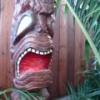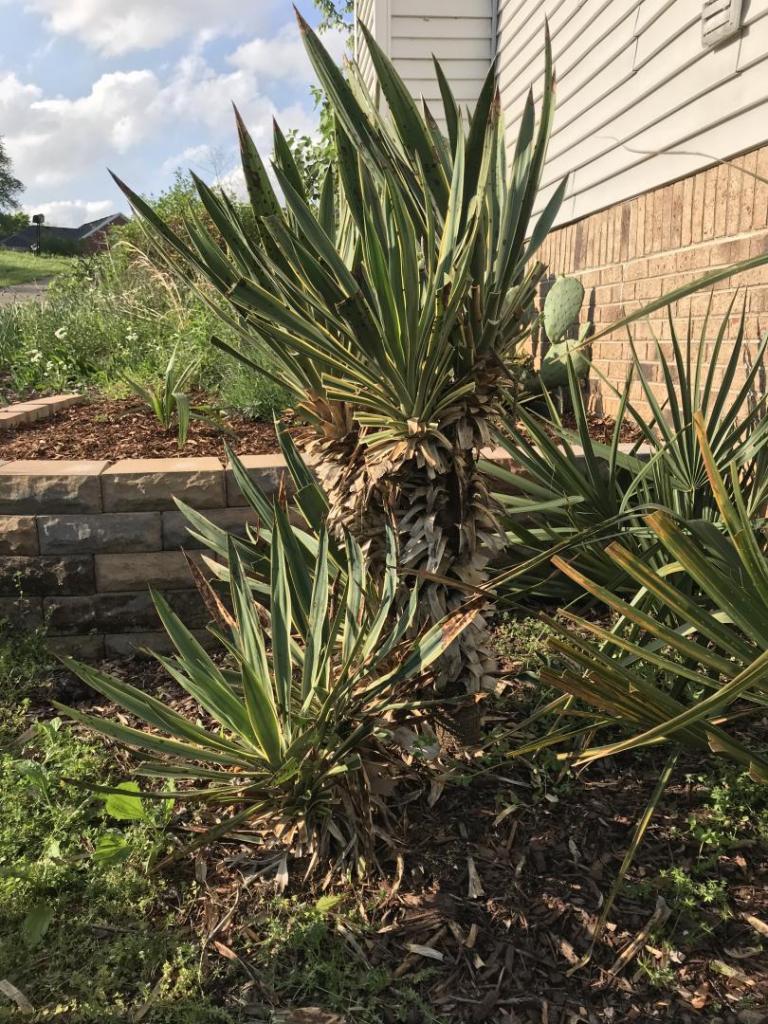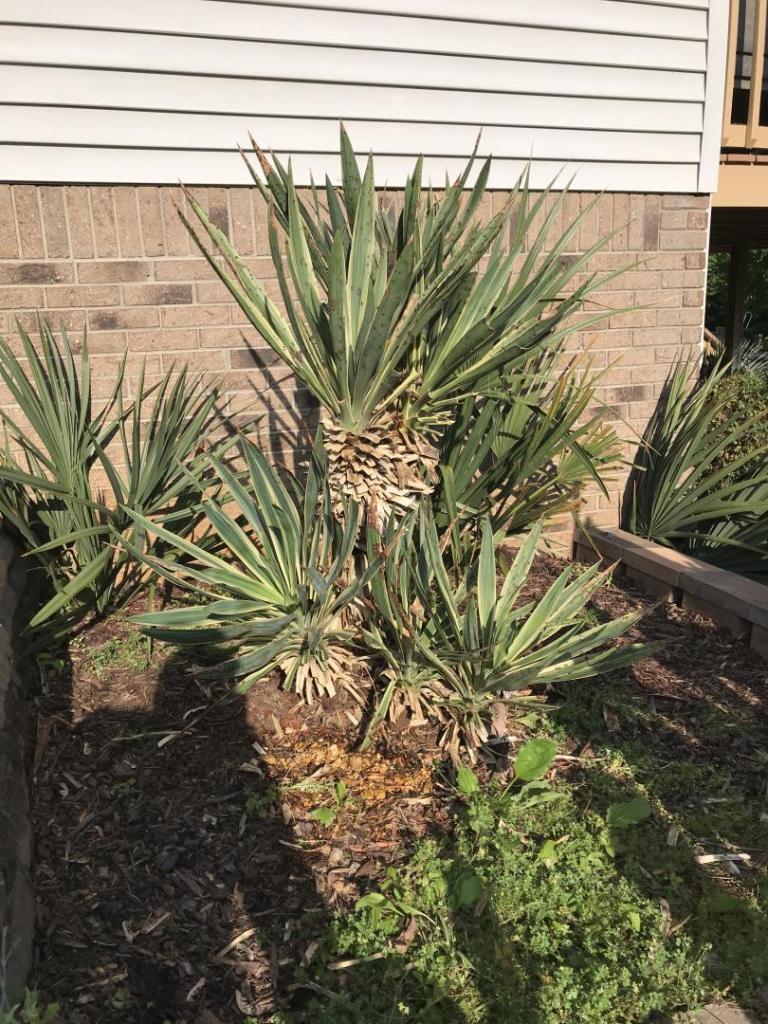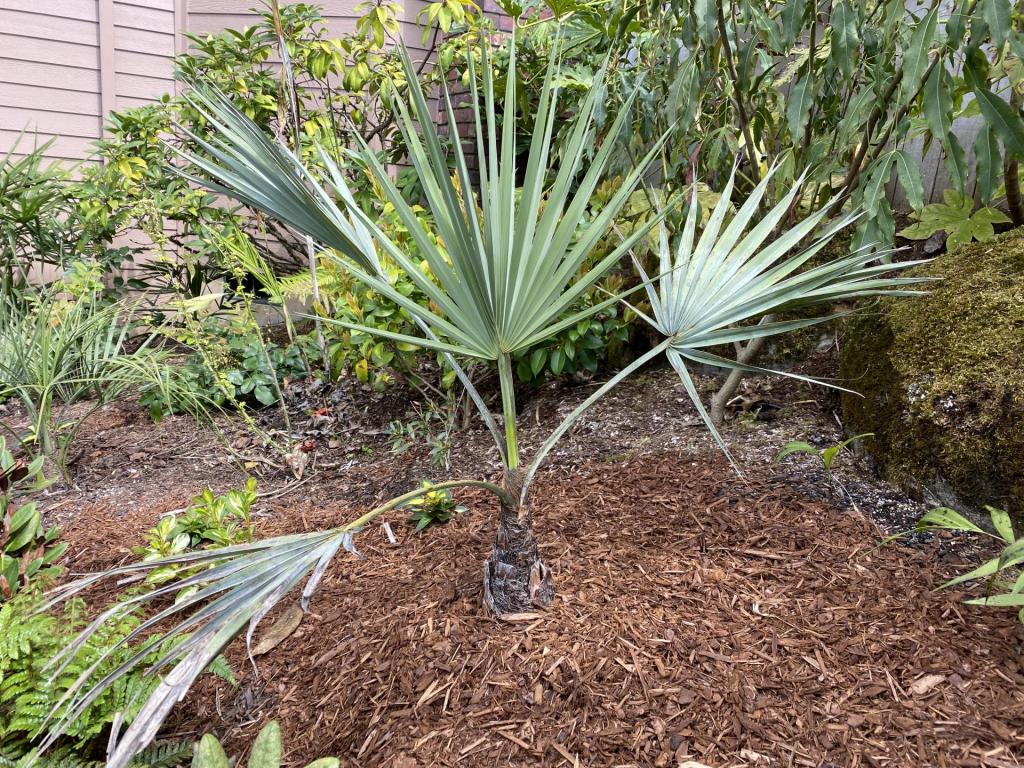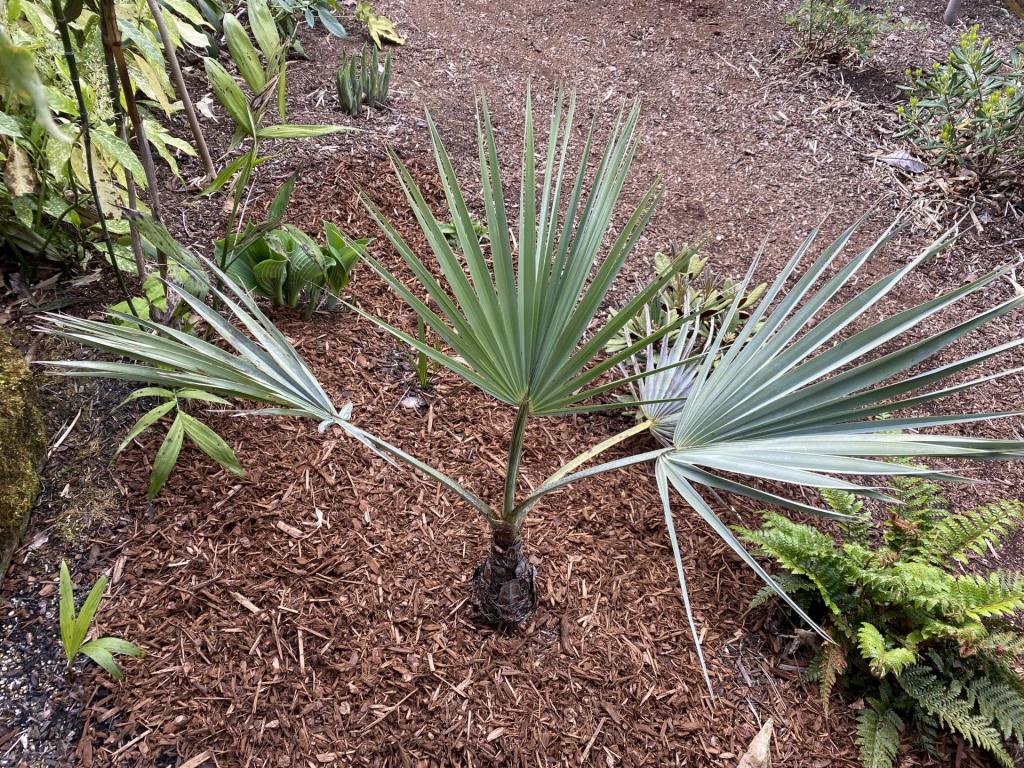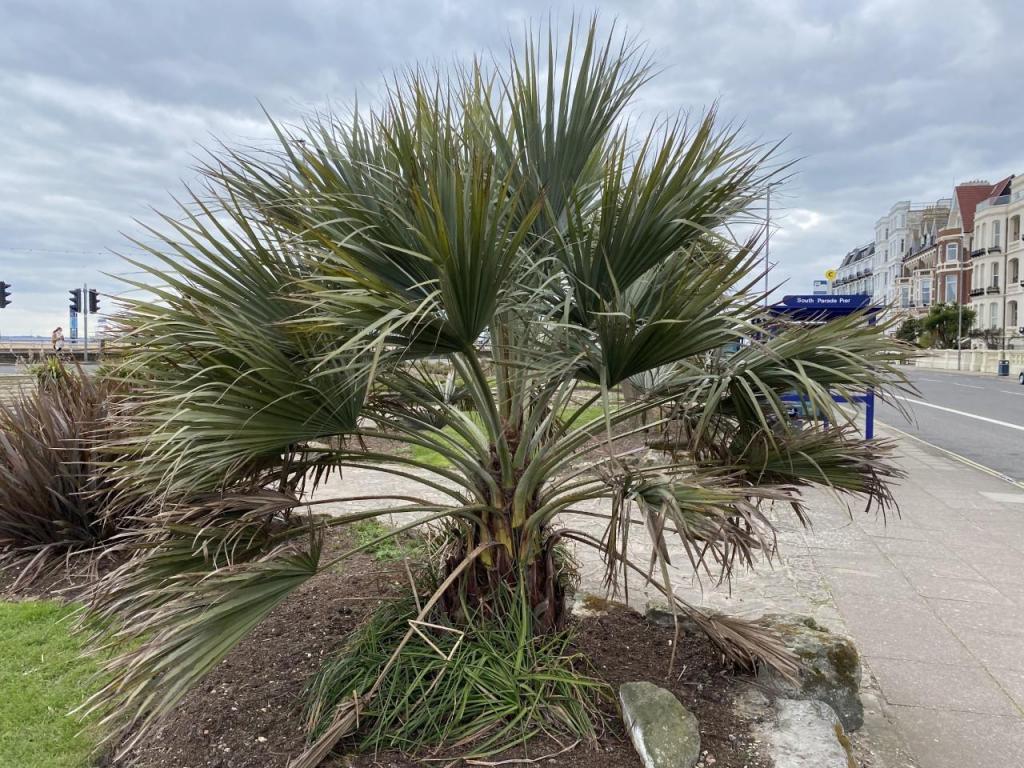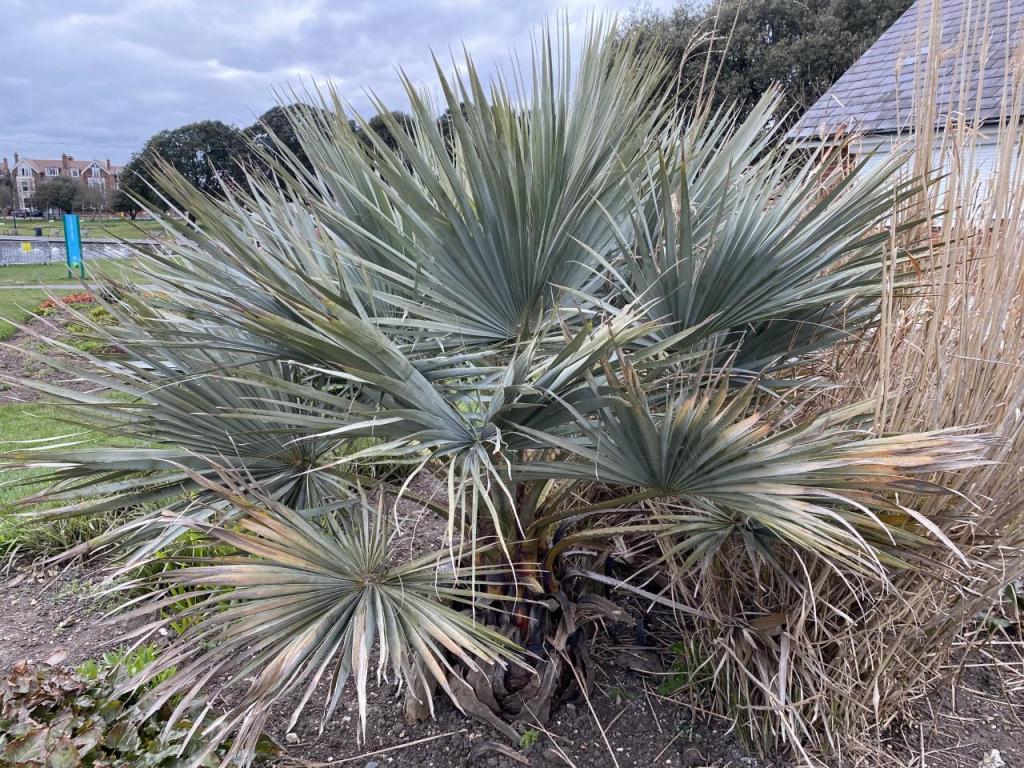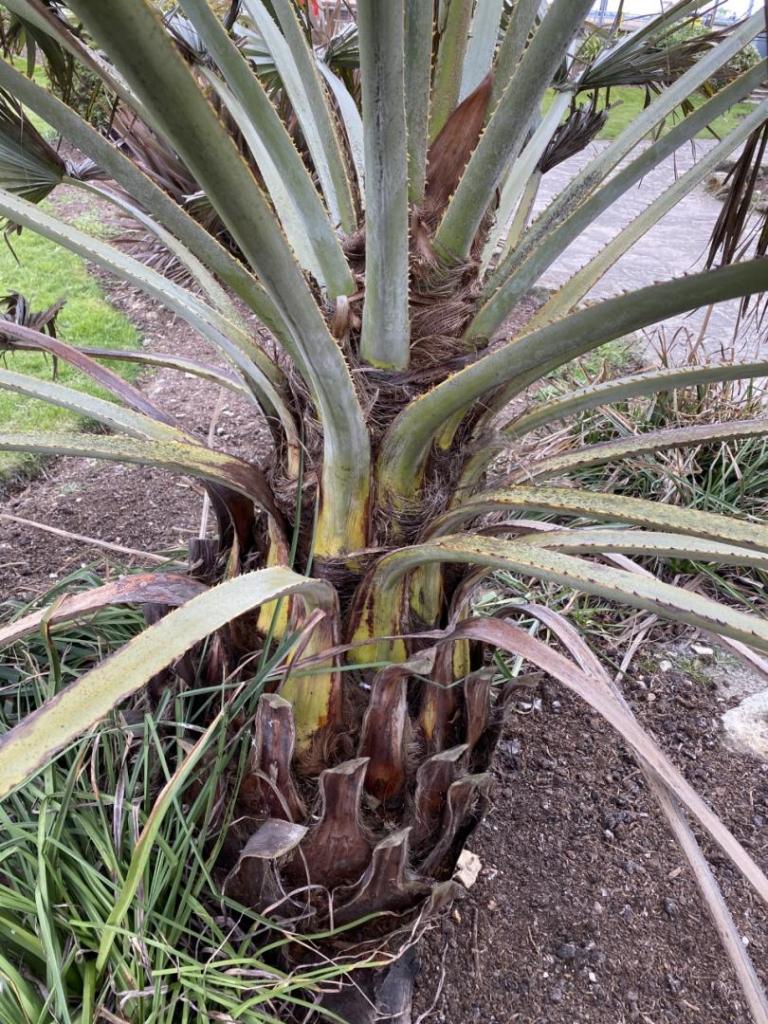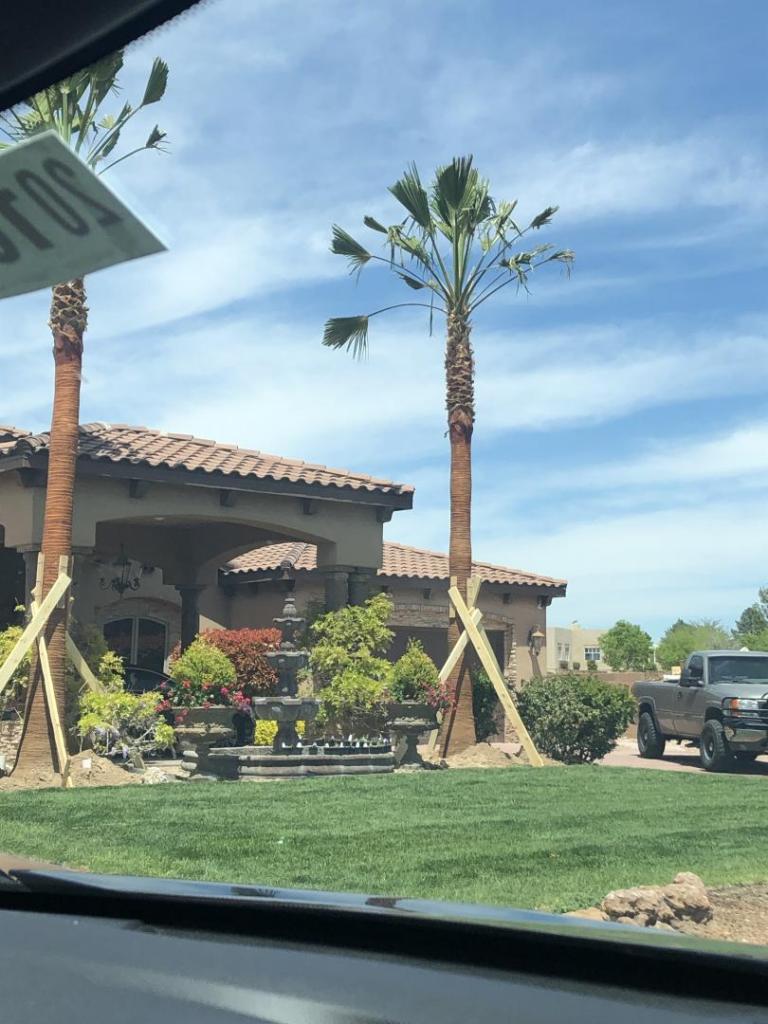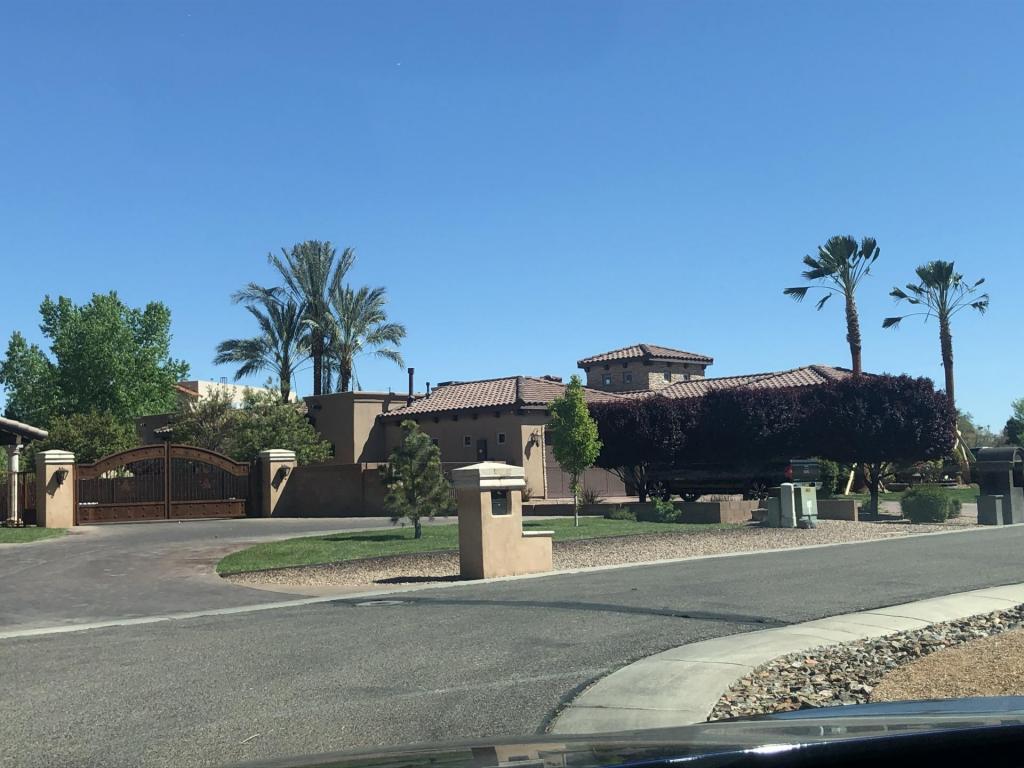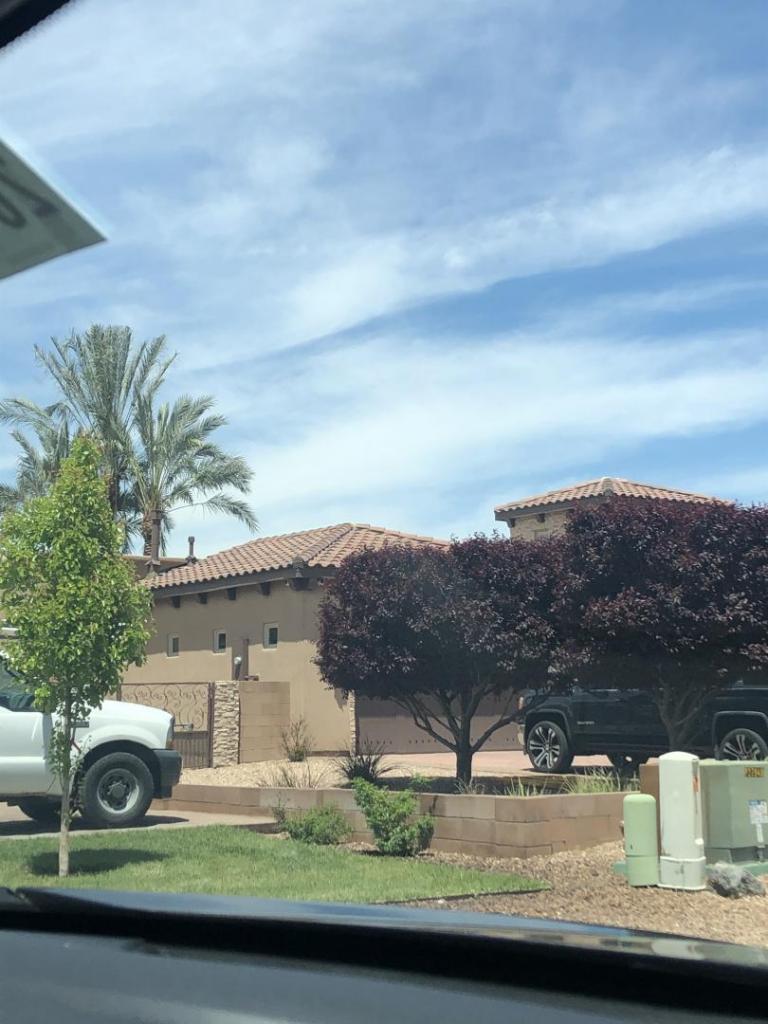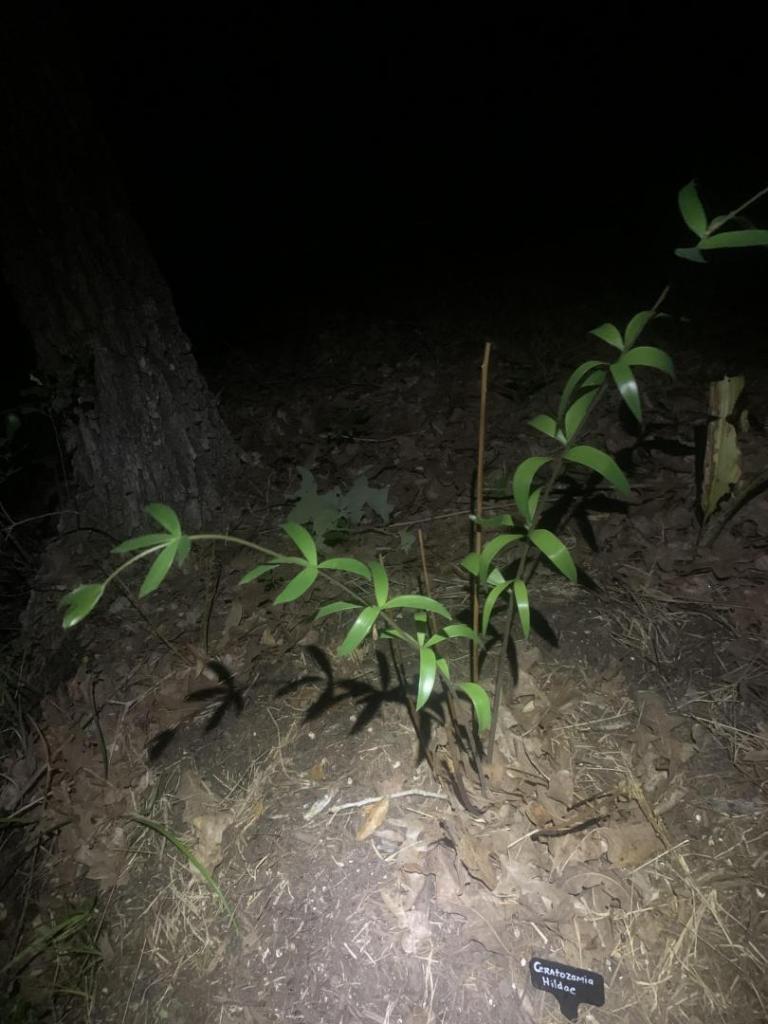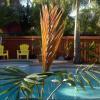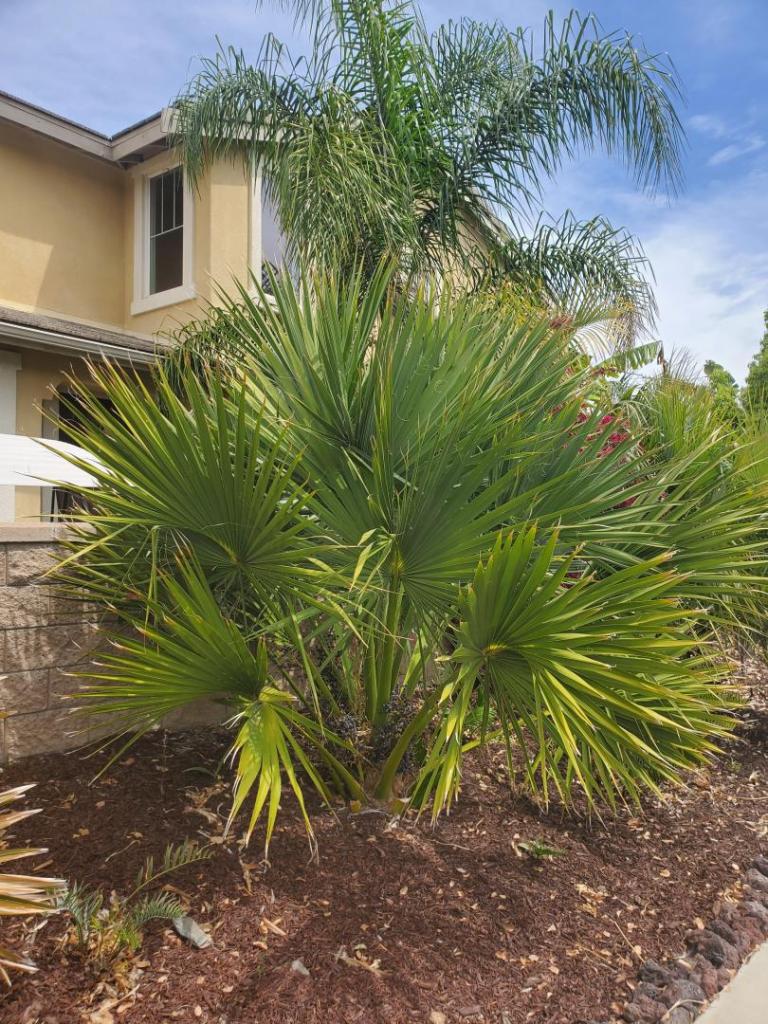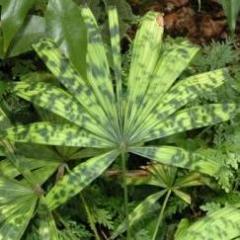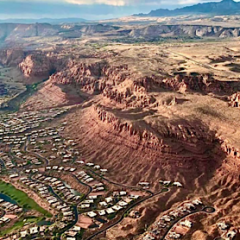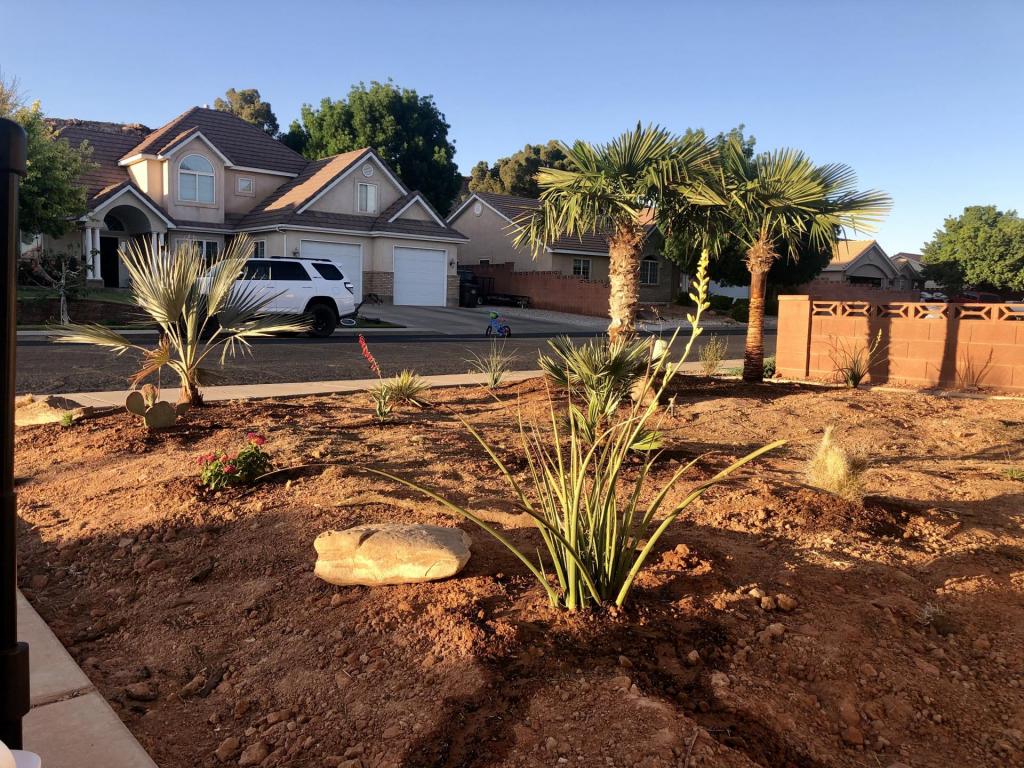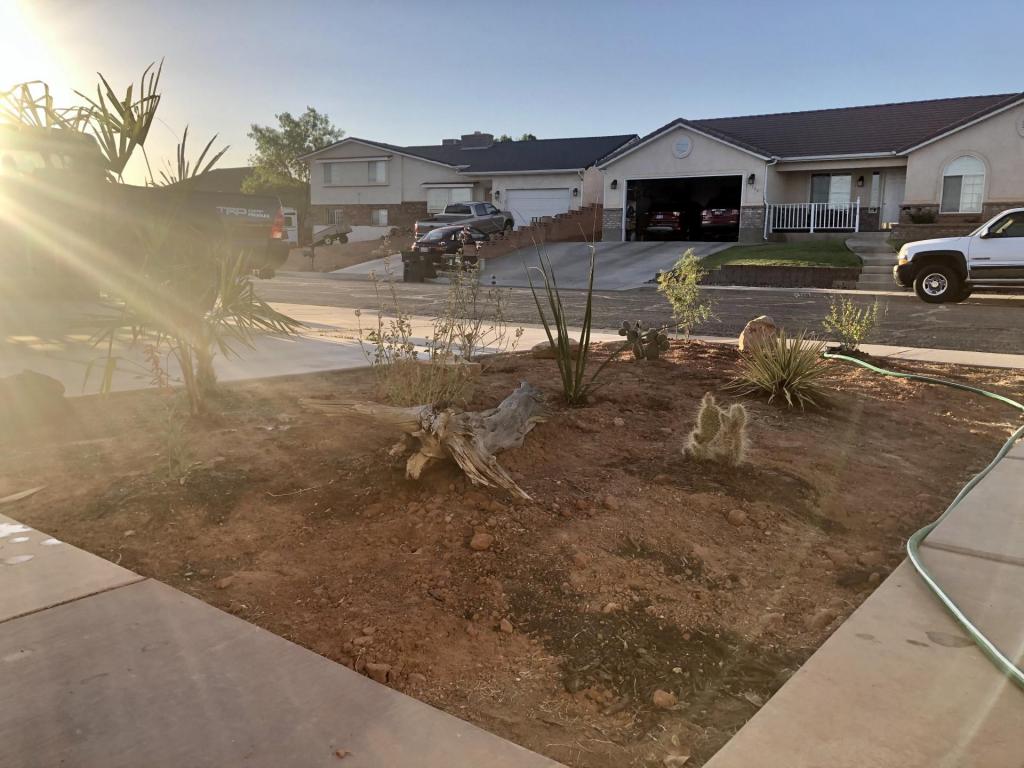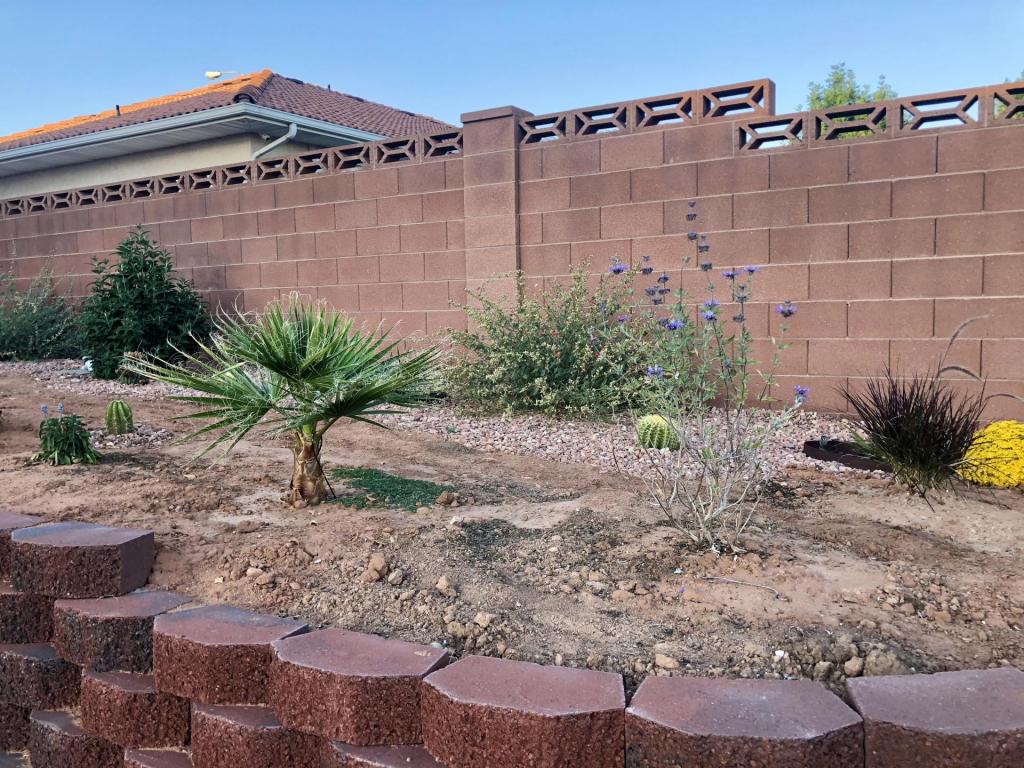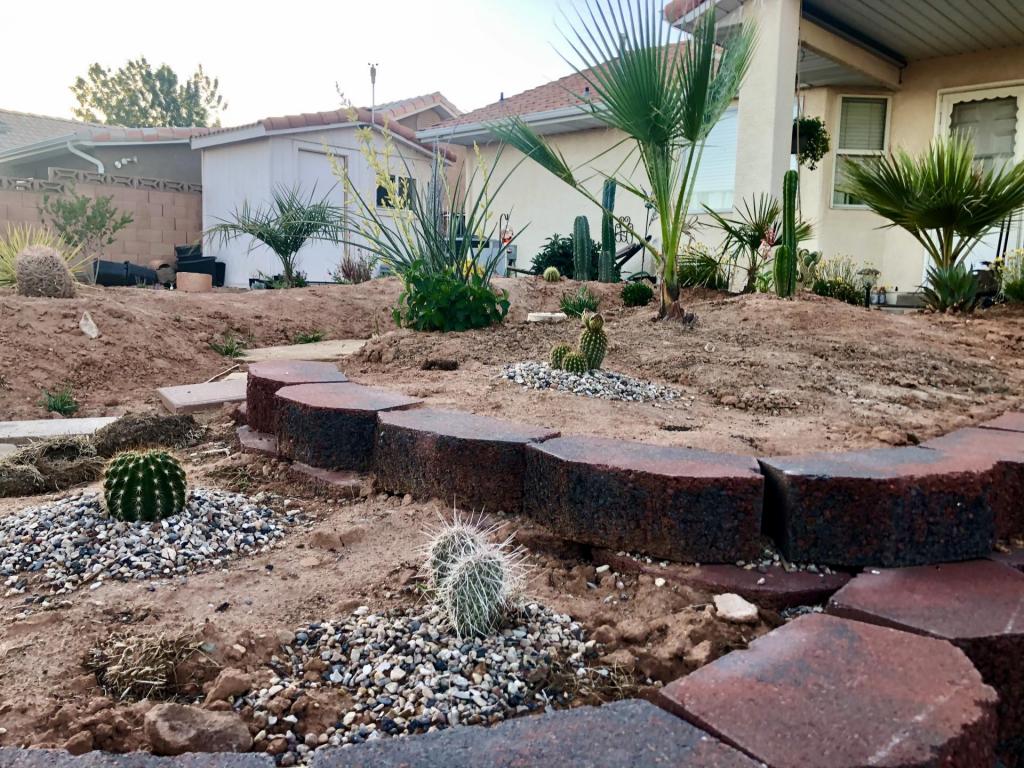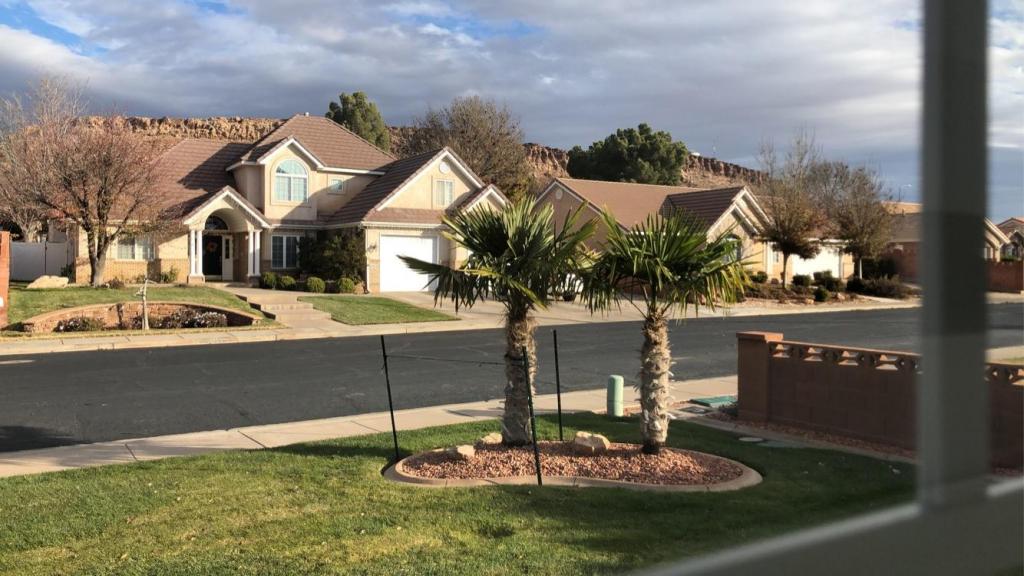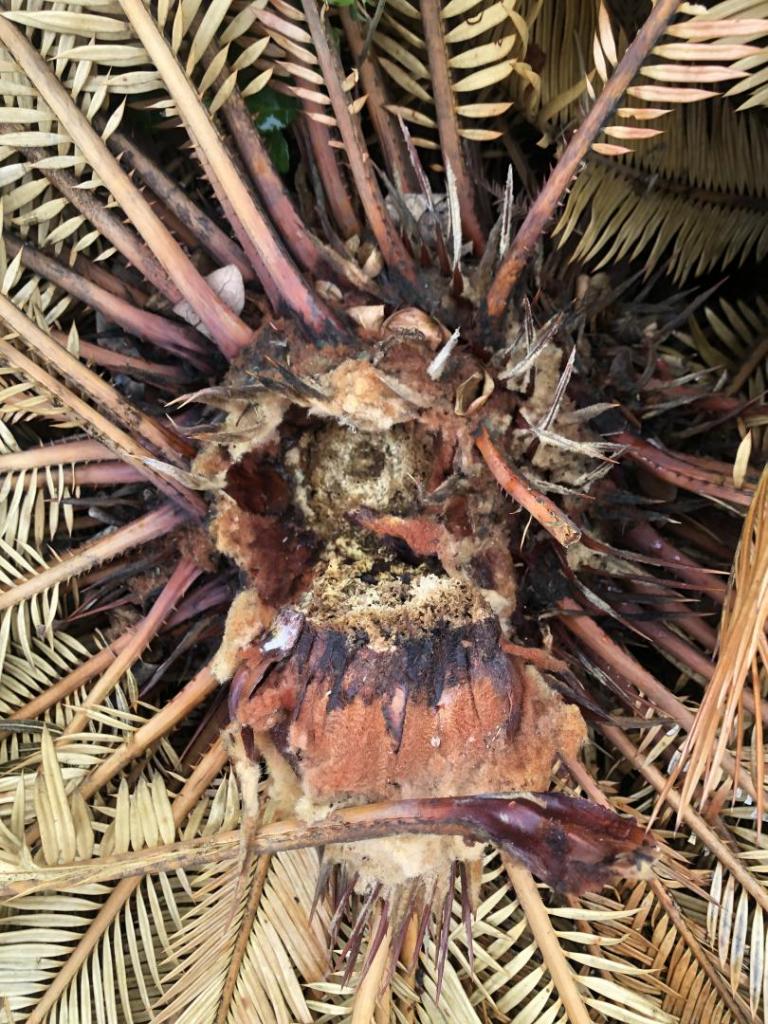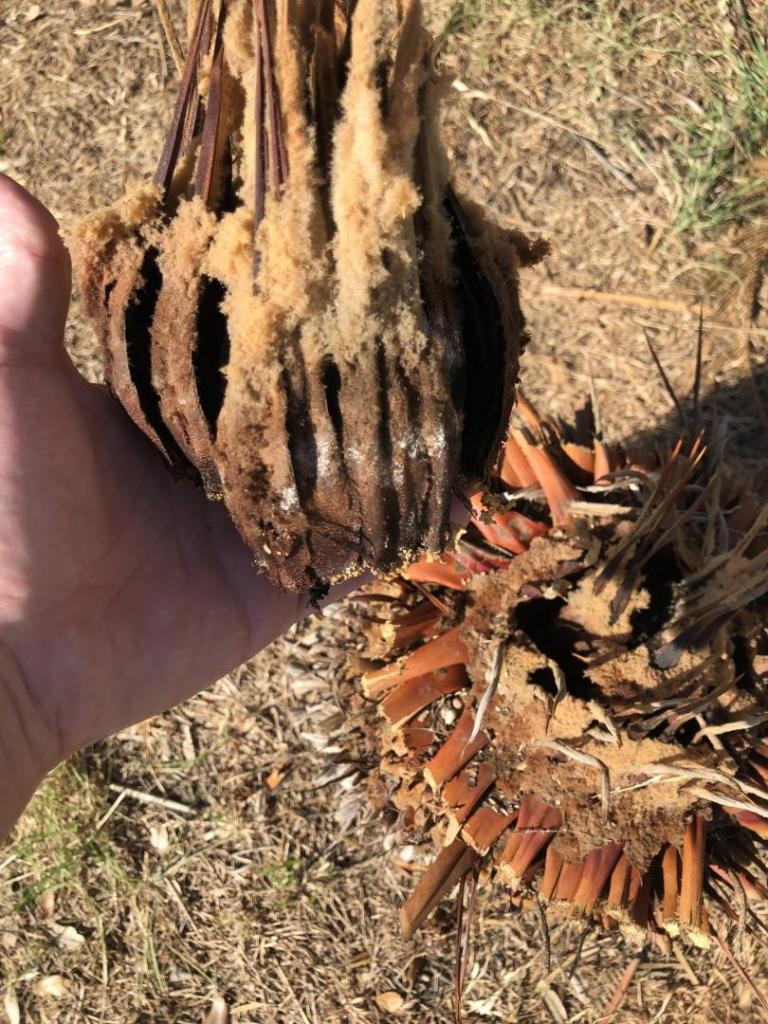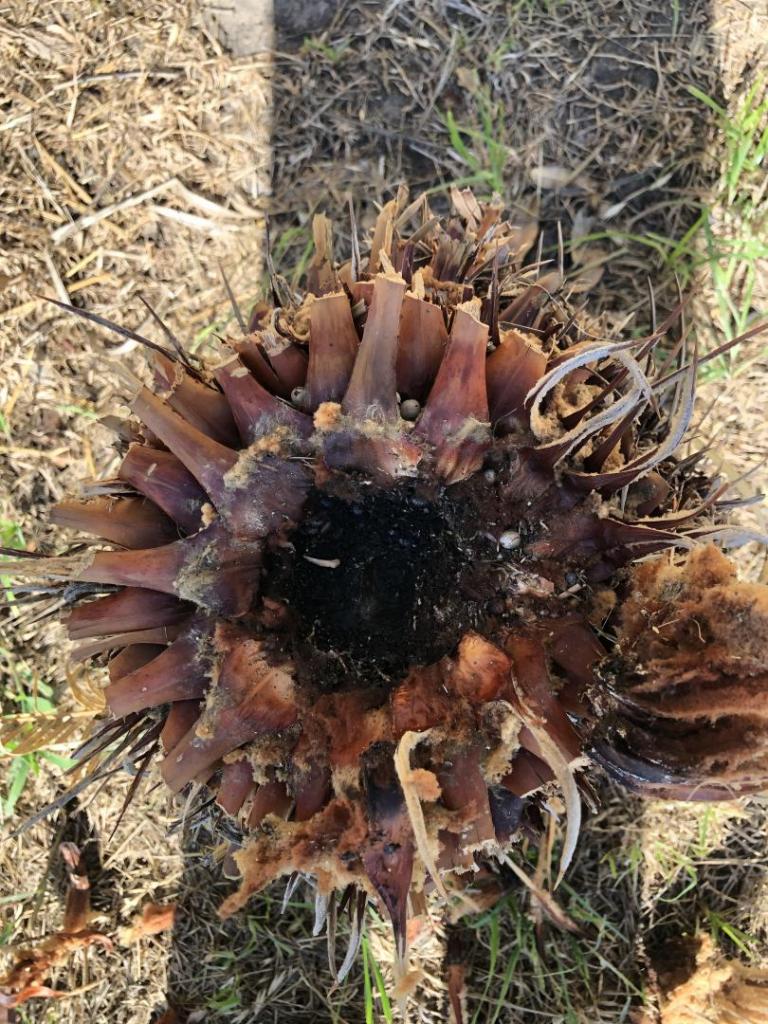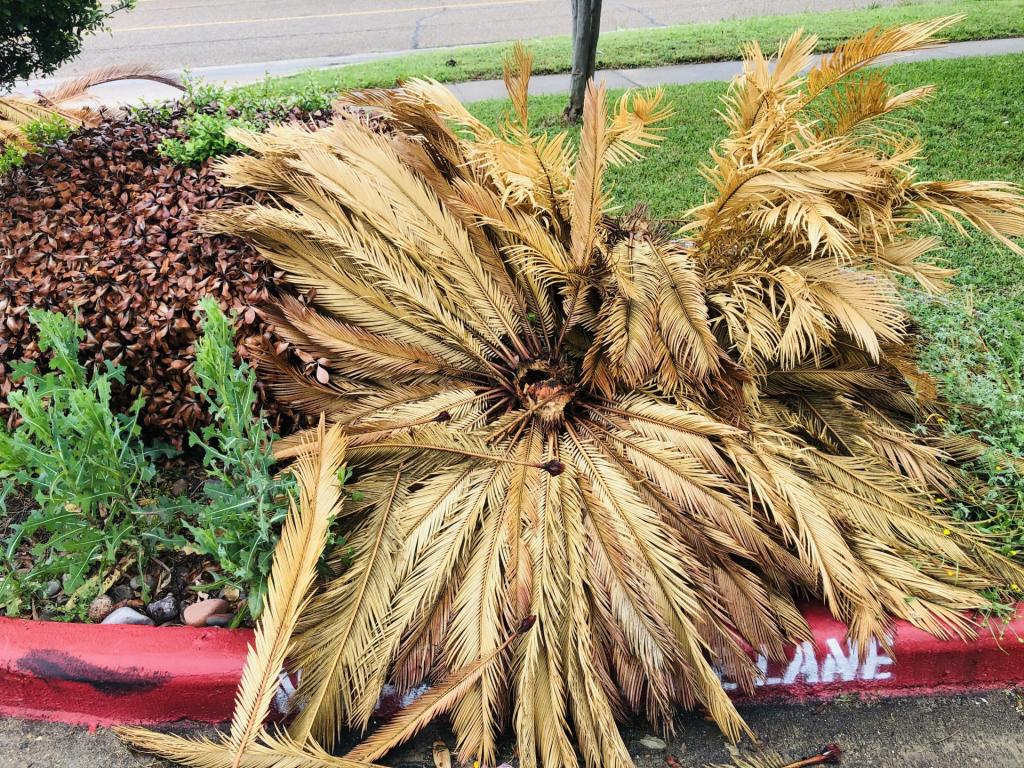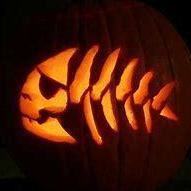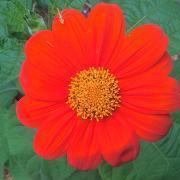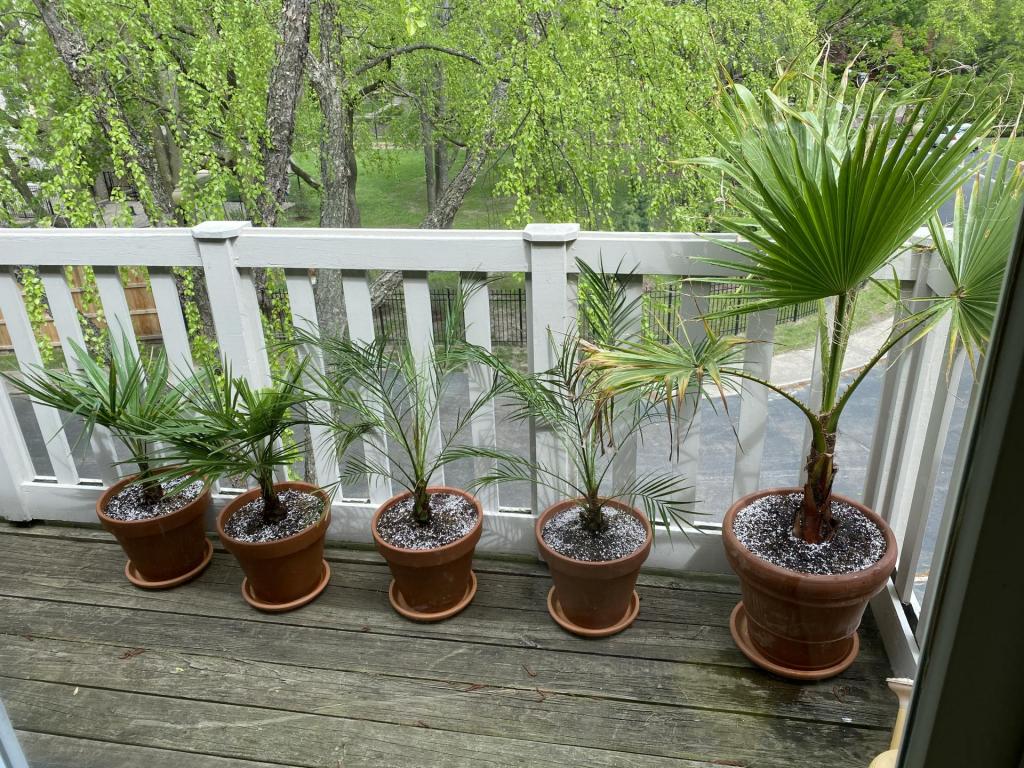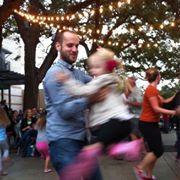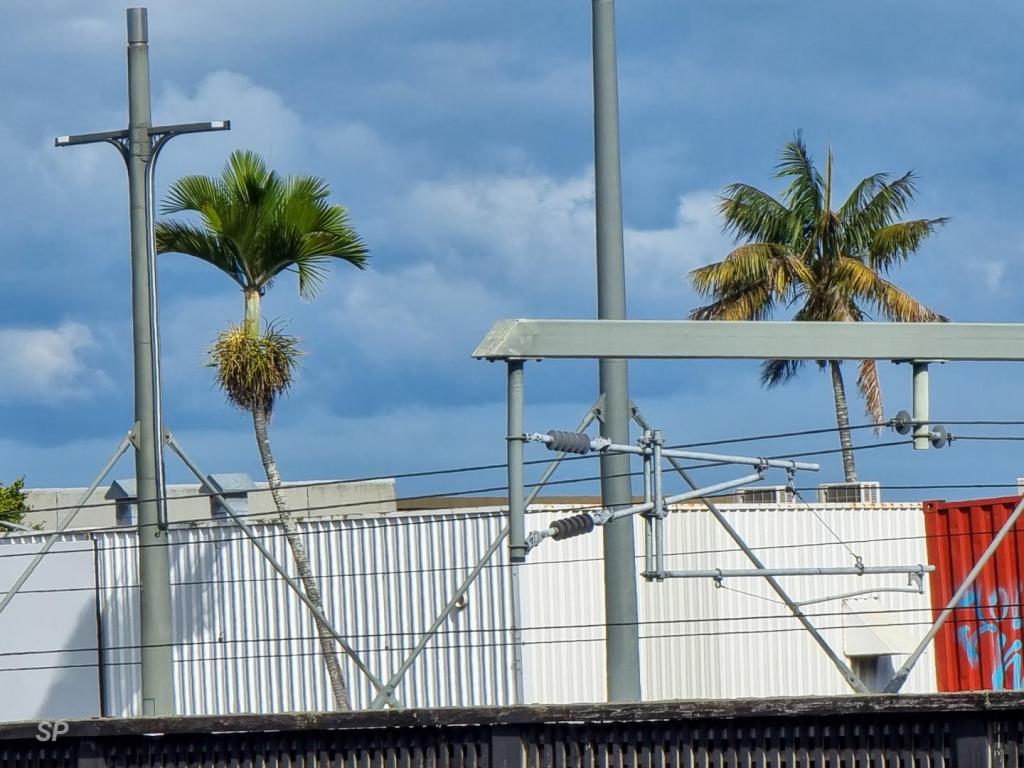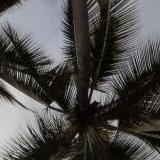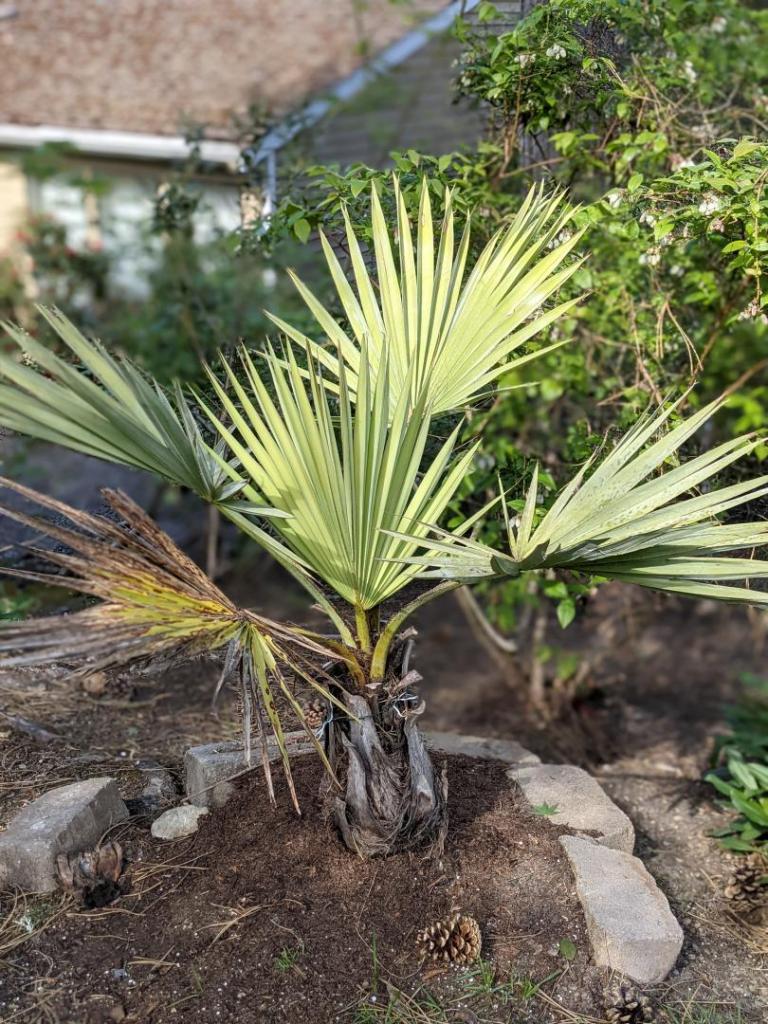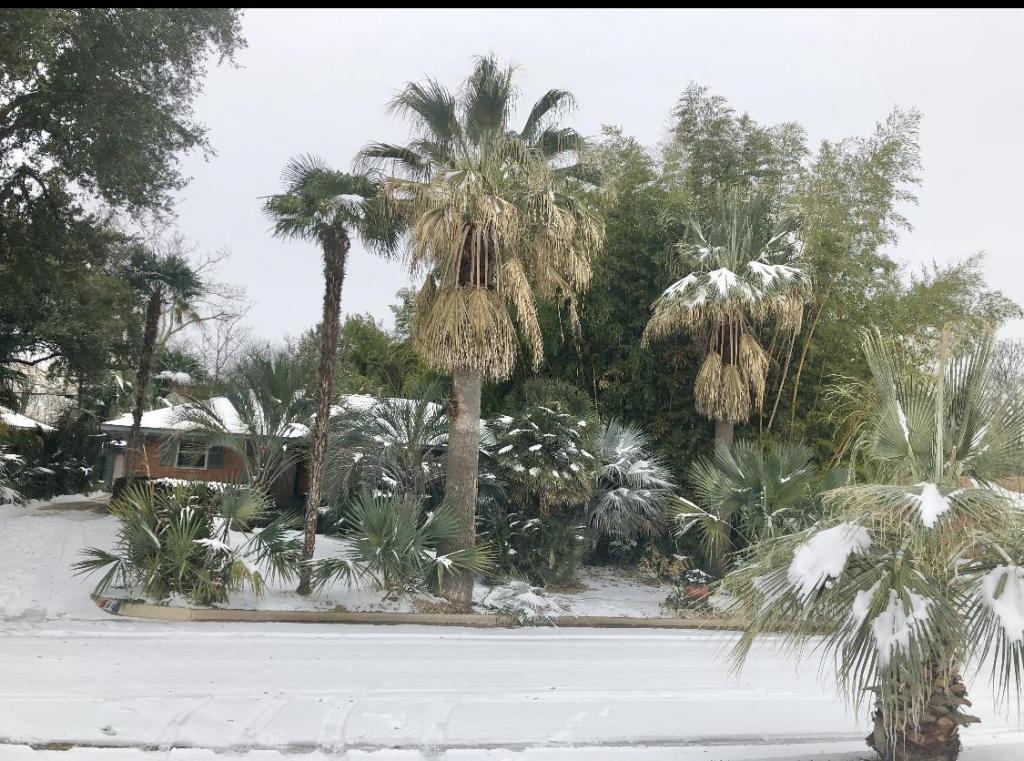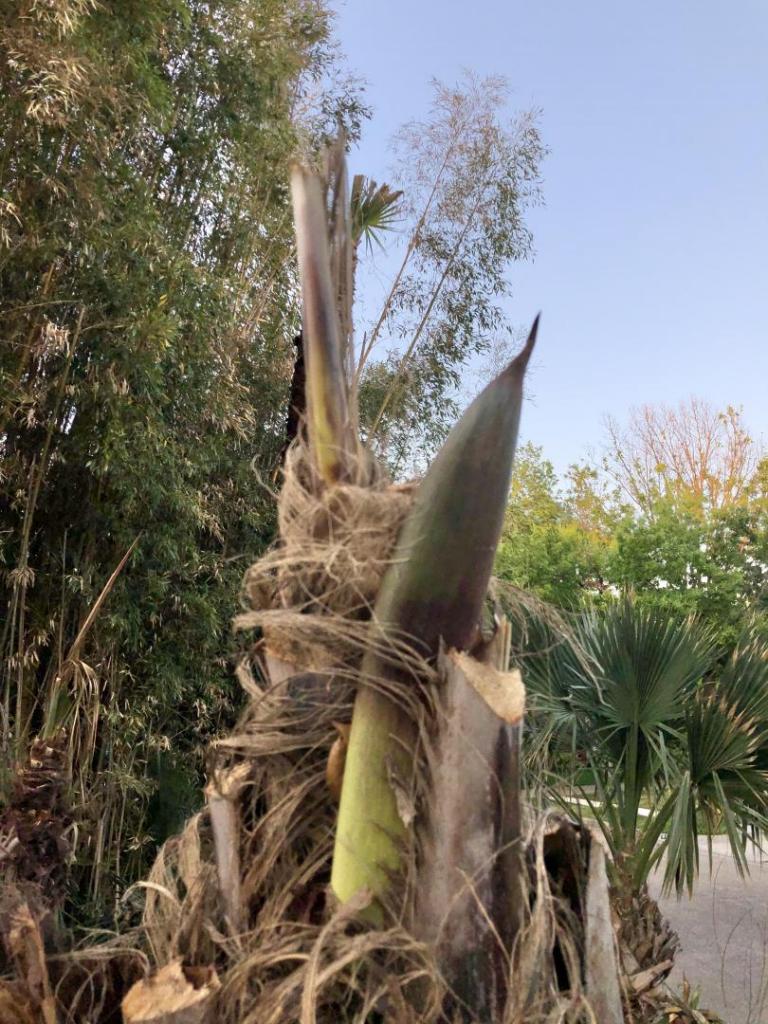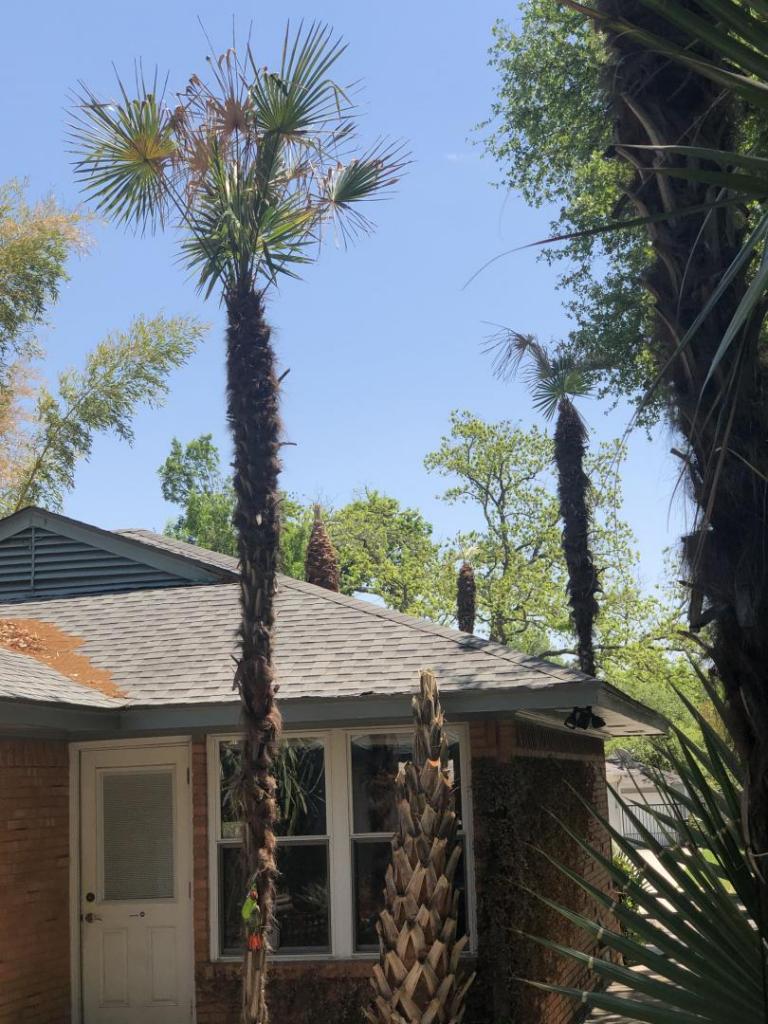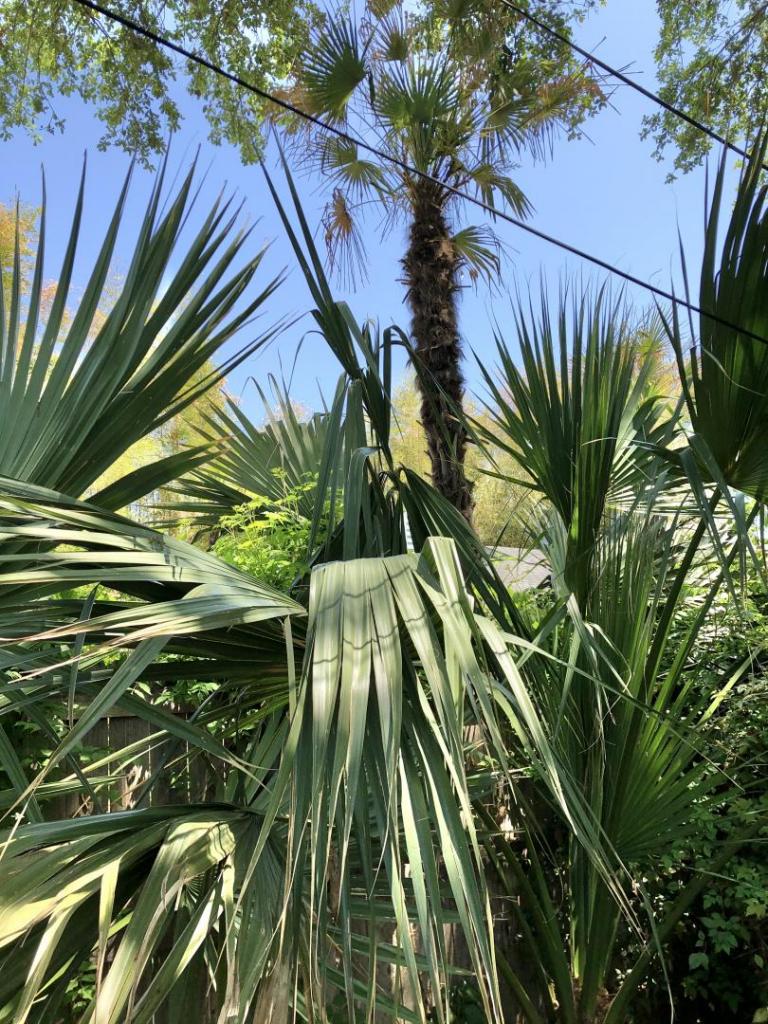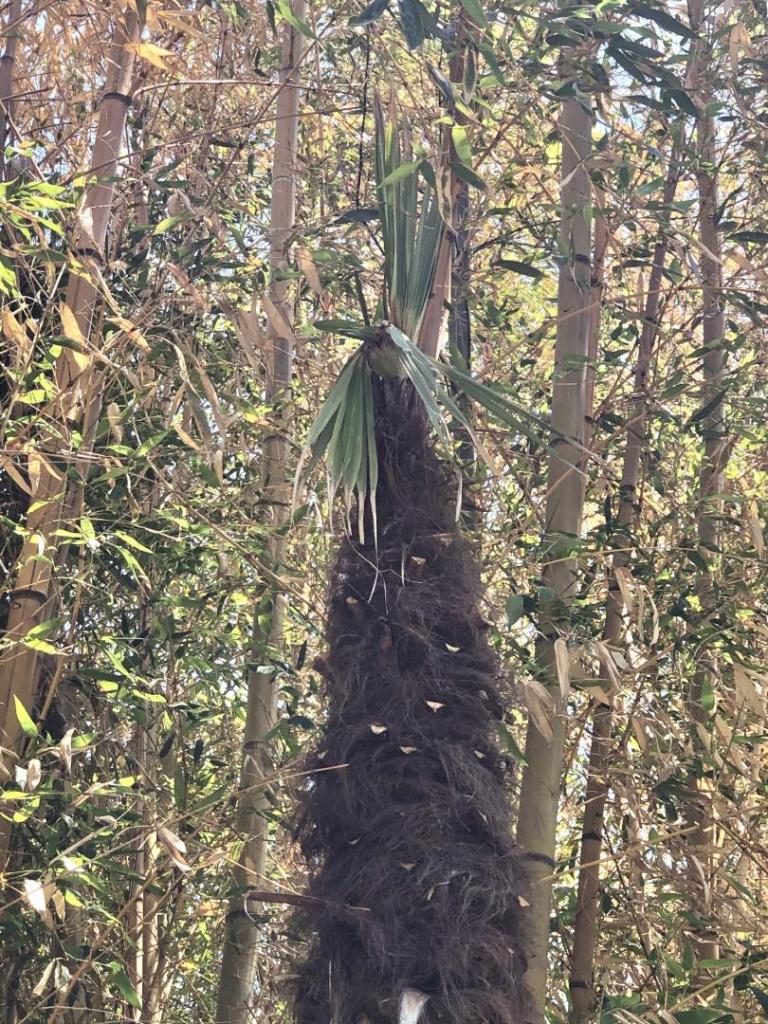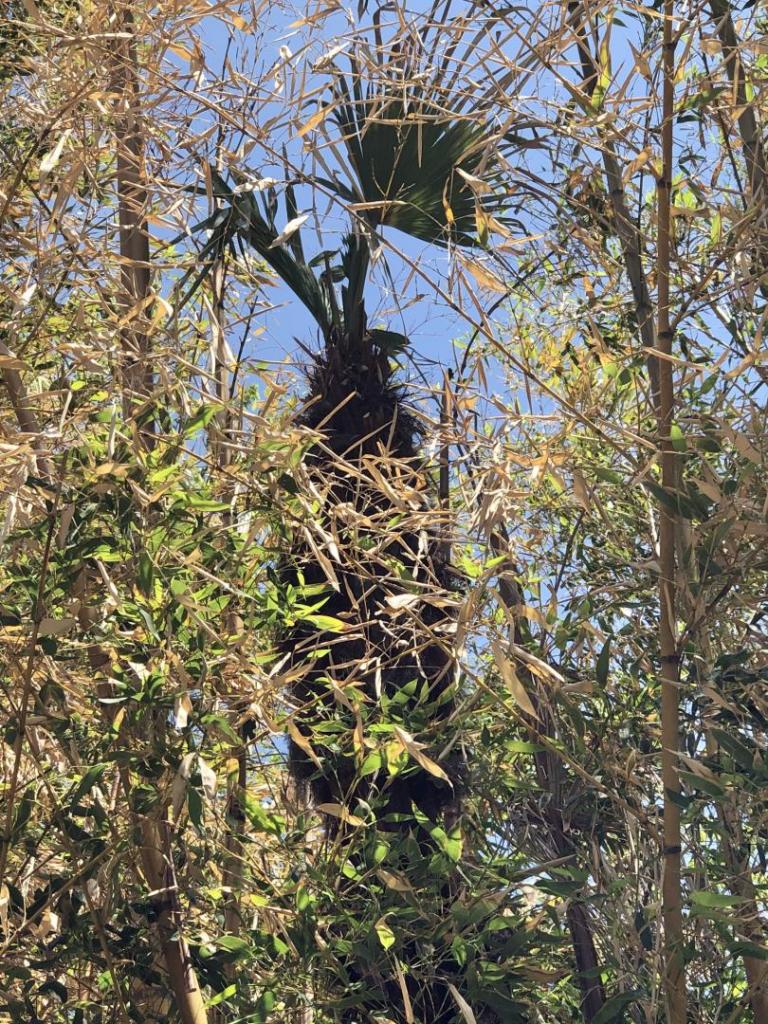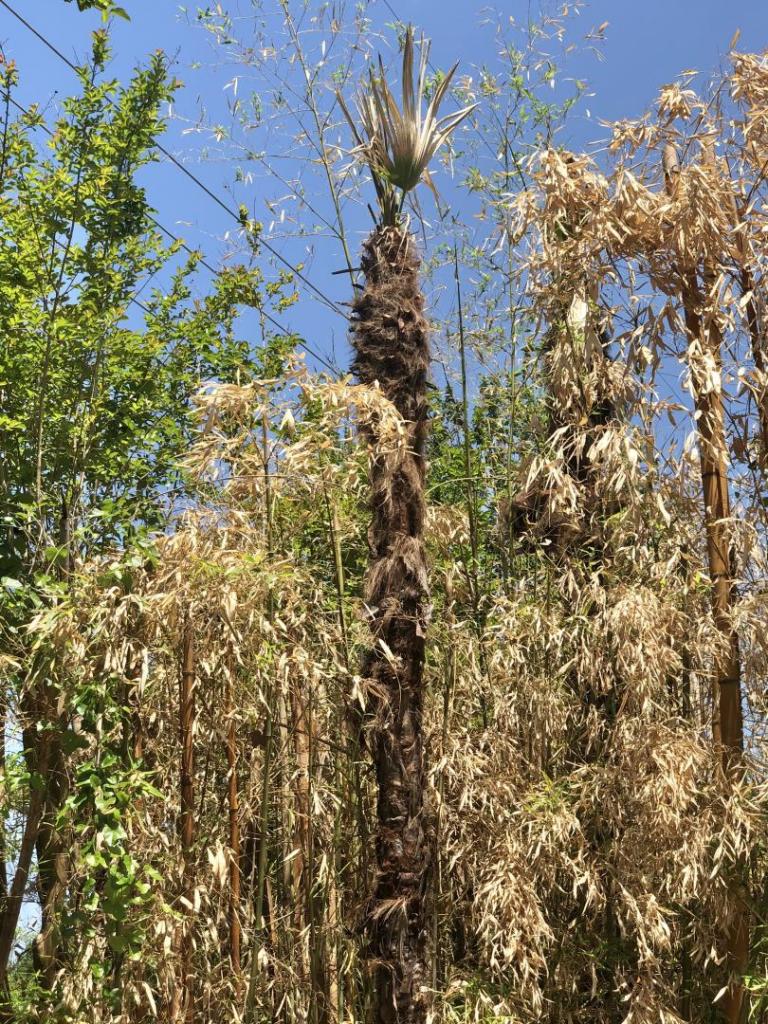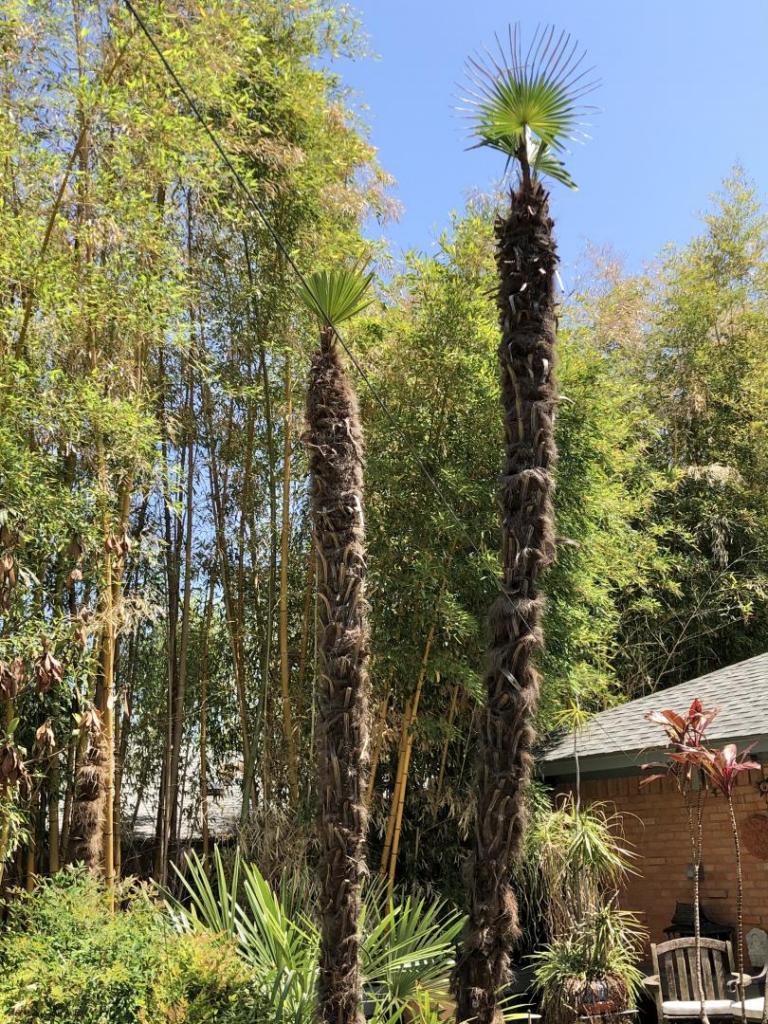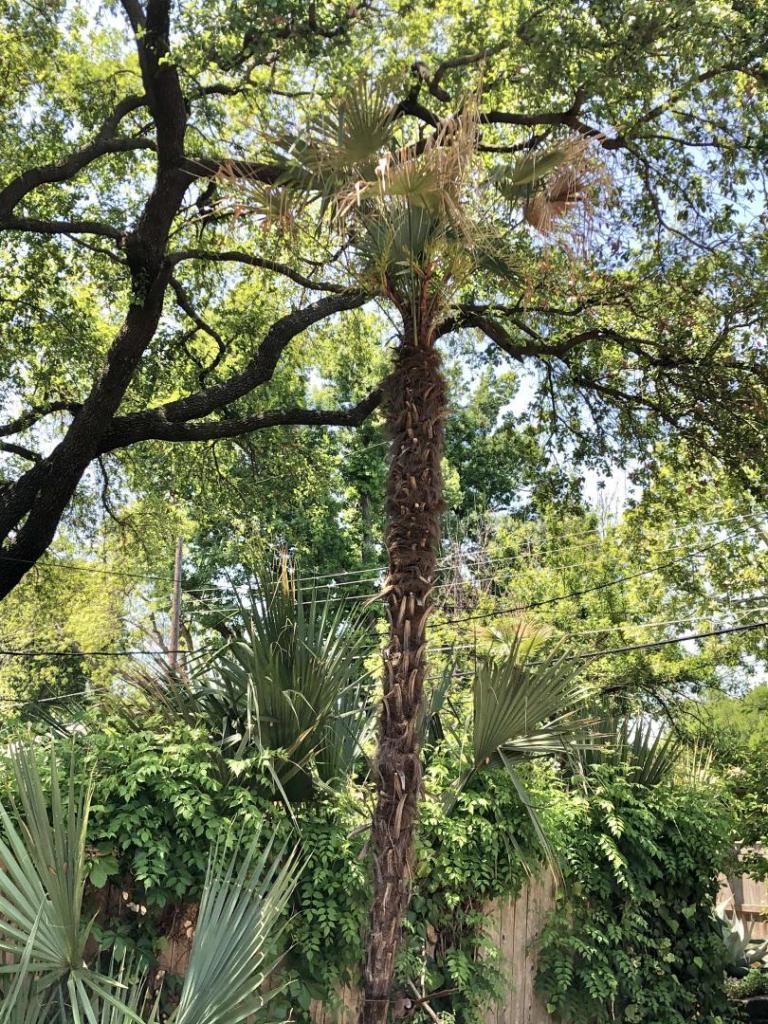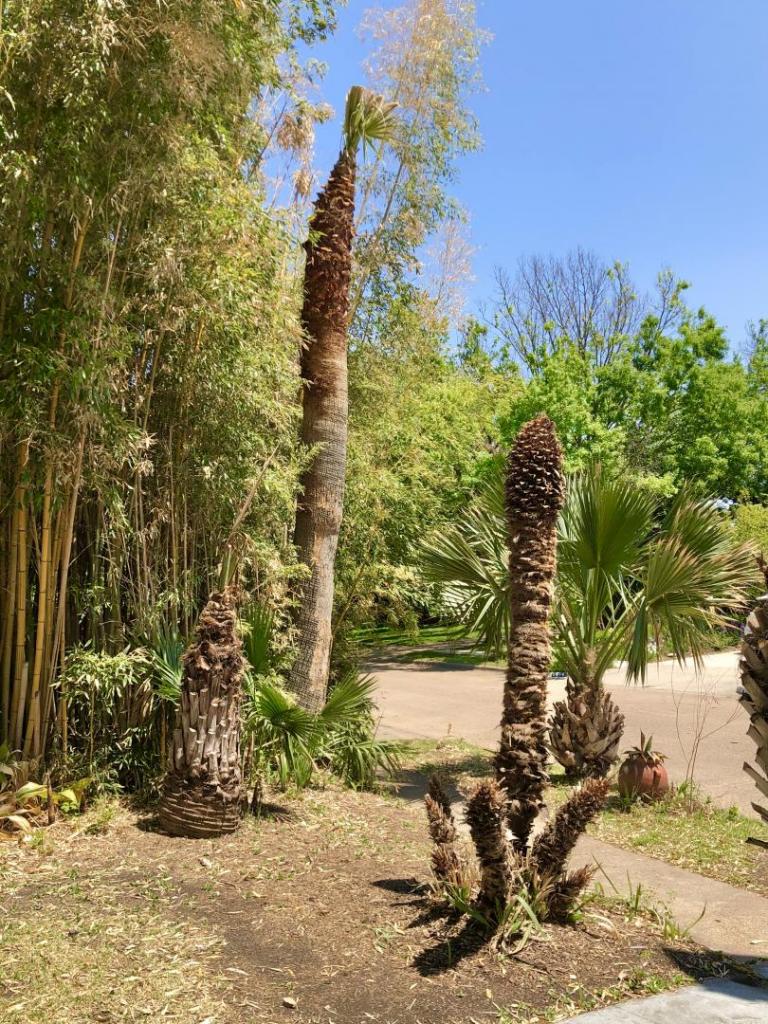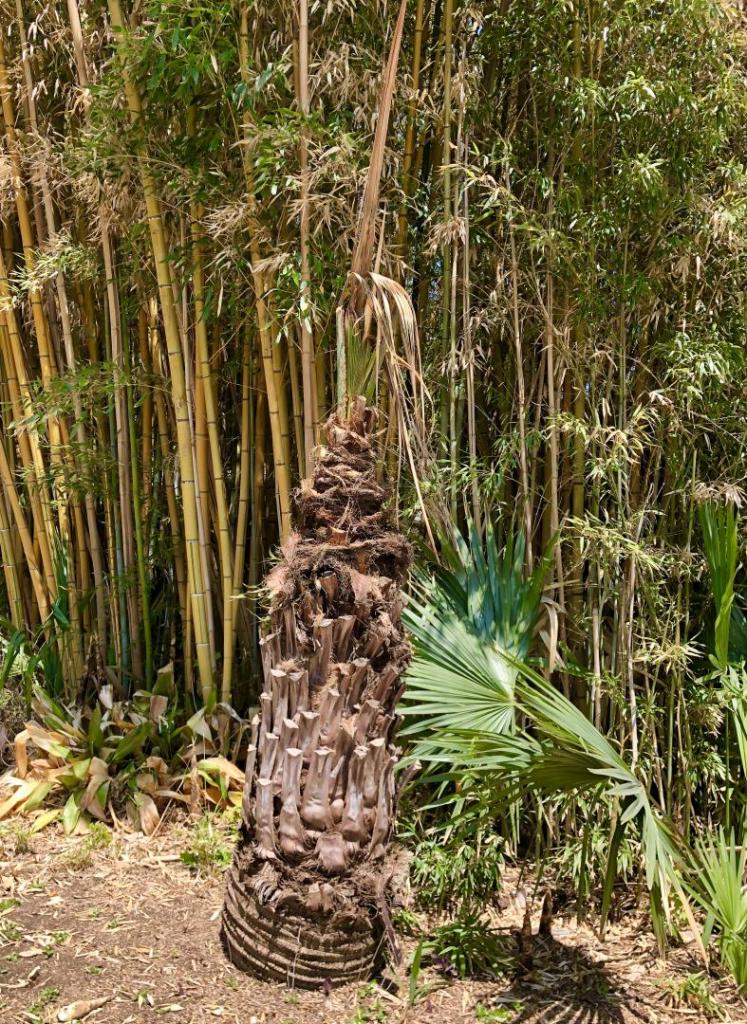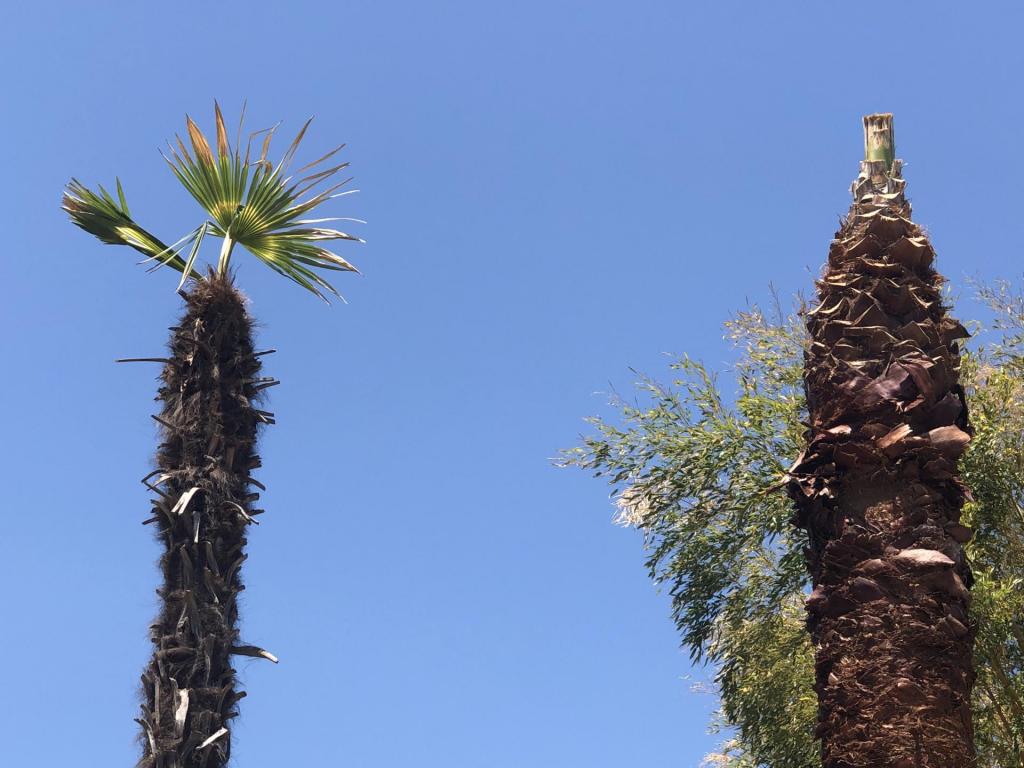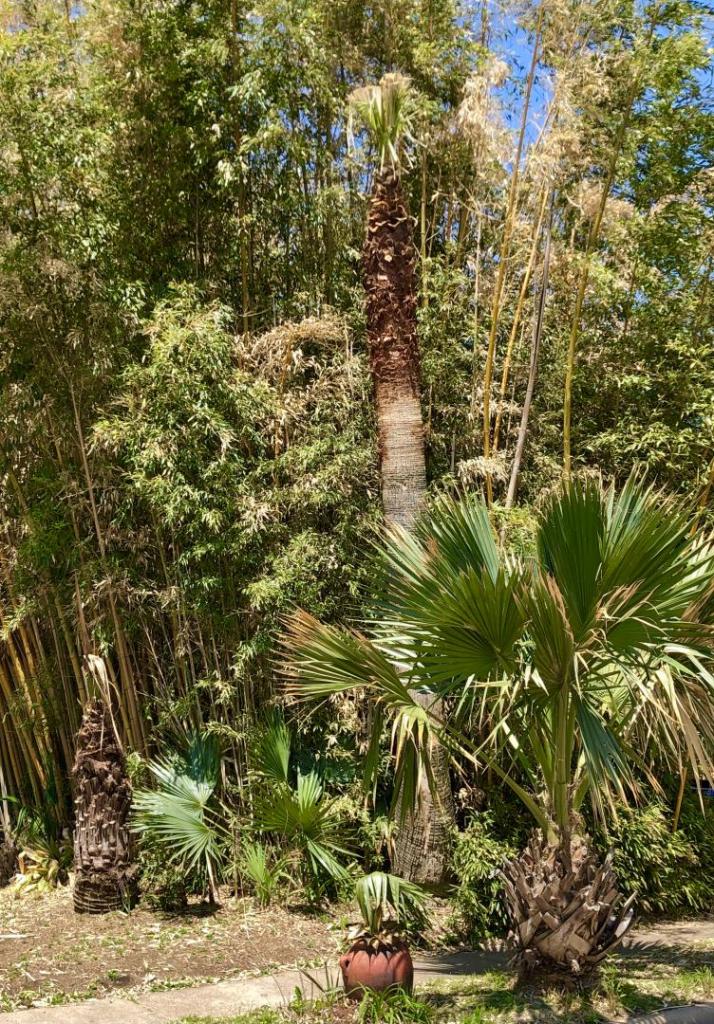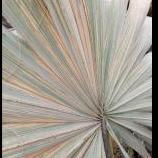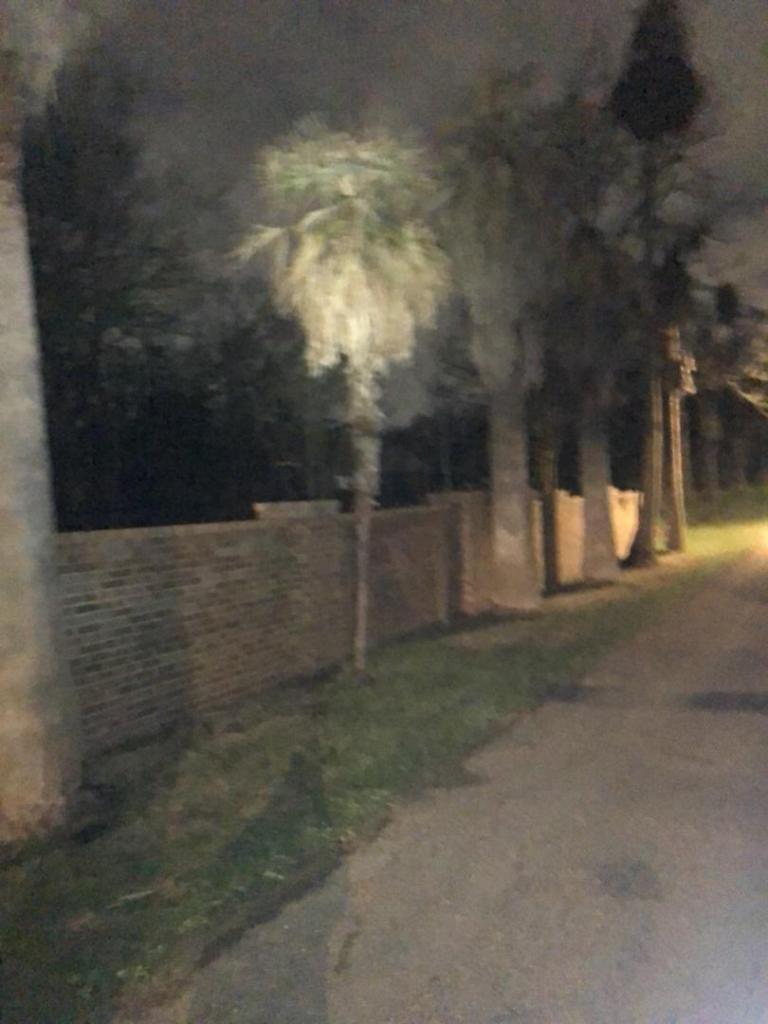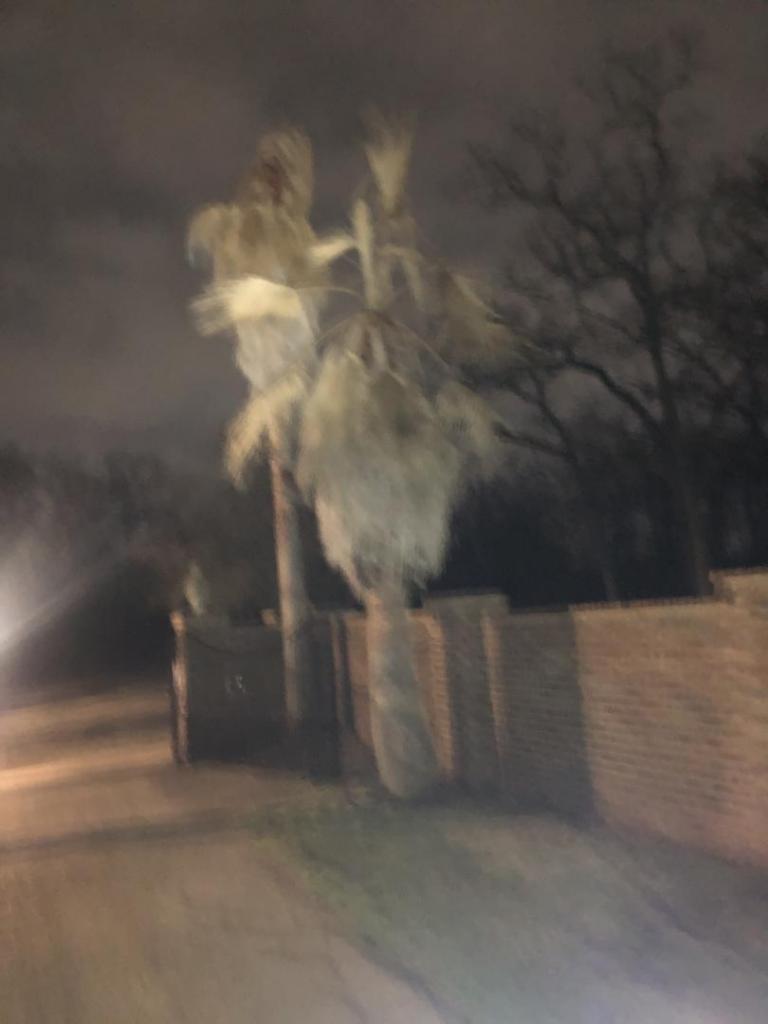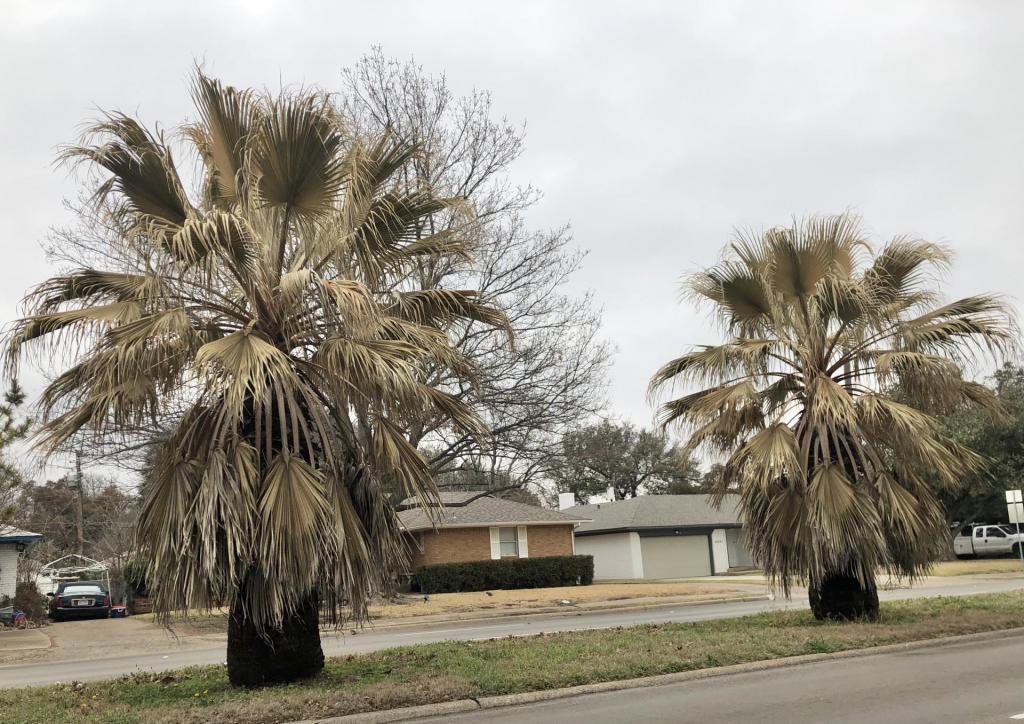Leaderboard
Popular Content
Showing content with the highest reputation on 05/04/2021 in all areas
-
We need some uplifting palm photos, so here's a video I found from 2016 of a garden near Seattle, the Jubaea is looking good. Biggest one I've seen in the state.7 points
-
6 points
-
What are they? There are Sabal palms in the Everglades that flower without having a visible above ground stem or trunk. At first glance they appear to be basic younger Sabal palmetto except that they don't seem to develop much of a trunk and will flower with no trunk at all. I first noticed them along the main road in Everglades National Park. I realized that none of these Sabals had the 10-20 foot trunks and dandelion/lollipop appearance of typical palmettos. On subsequent visits I noticed them in the pinelands habitat of the park where they grow in the understory along with Serenoa repens. These palms flower with no evident trunk and the trunks that do develop are only a few feet tall. I have also noticed these flowering trunkless sabals in other areas of the Everglades outside of the national park. They exist along Loop Road off of Tamiami Trail in Monroe County. A few days ago we were in the area of Grossman Hammock and Chekika Park in western Miami-Dade County. In this area there were trunkless flowering palms along with some "typical" trunked palmettos and many examples in between. Examining the inflorescences I find that on the trunkless palms the inflorescences seem to remain shorter than the leaves. They mostly branch to two orders but sometimes three orders. The ones that do branch to three orders usually have two and three orders on the same inflorescence. I recently noticed that the smaller palms without trunk generally have only two orders of branching. The ones with three orders tend to be larger and older and more likely to have some trunk. I haven't found these to be hard and fast rules though. In attempting to identify these palms I have referred to Scott Zona's 1990 monograph on the genus Sabal: https://scholarship.claremont.edu/aliso/vol12/iss4/2/ and "Sorting Out Florida Sabal Palms": https://edis.ifas.ufl.edu/publication/FR357 There are said to be four native species of palms in the genus Sabal in Florida. Going by the above papers these Sabals in question can't be S palmetto since S palmetto does not flower until a trunk is present. Sabal minor only grows further north from here and is much less costapalmate. Sabal miamiensis has inflorescences with three order branching that extend beyond the leaves. This leaves Sabal etonia as the remaining possibility which largely seems to fit. However, the range of S etonia is described as central Florida ridge and SE Florida coastal ridge. If they are S etonia they are existing far from the range they are said to come from. If they are not S etonia then what are they? S miamiensis? Some variation on S palmetto which can be quite variable? In the pineland habitat of Everglades National Park: This one has some above ground trunk. This is about as much trunk as they seem to get. Lotsa costa: The pine habitat again with some Serenoa. No tall Sabals in here: Happily flowering after a recent burn: Flowering along Research Road in the park: Along Loop Road in Monroe County mixed with some Serenoa: Along Loop Road: Messy inflorescence: Probably the smallest one I've found flowering. It is right next to the road and has been whacked by mowing equipment a few times. No, it is not a silver variant, just covered in dust from the unpaved road: Near Grossman Hammock in western Miami-Dade County: I've seen a few that appear to be "walking" though this one may have been knocked over by a truck or something. It does like it has a heel: Like so many Sabals they can be weedy:4 points
-
I've had to load up my old photo hard drive to have a look at pictures I took there some 15 years ago, because I remember seeing queen and king palms there. I've got loads of photos of Phoenix, Washingtonia, Butia, but since others have shared these I'll just put the most interesting ones. The first two are the same, nice looking queen palms, photos taken in 2006 - it would be great to verify whether these are still around. I'm intending to visit family out that way in the next year or so, so if nobody gets to them first I'll get some updated photos when that eventually happens. I also spotted an Archontophoenix there a couple years later, in 2008. Looks like there are some queen palms next to it too. This one even has an address in the photo, so we know where to look to see if it is still there. This was the most surprising palm I've ever seen in Oregon so I hope it's still there and even bigger now.4 points
-
S. "Tamaulipas" was unblemished at -5F along with the Needles. Most of my minors showed some damage.4 points
-
Thanks all for the suggestions. I've gone ahead and planted it now so I hope very much I've done it right to give the best possible chance in this cool, humid climate. I'm encouraged to see that some Braheas are going ok in some Pacific Northwest and other English gardens - looks like we have a chance here but should expect very slow growth (which I'd anticipated before planning this anyway). I'll document the planting process below in case it's useful - hopefully as a successful example. First I dug a few inches deeper into the soil. Bearing in mind this is a raised bed, the original ground level was the concrete strip on the right side. This was initially filled with a thin layer of gravel (just the bottom end completed in this picture), about 2 inches. We seldom get very heavy or prolonged rain, but if we do I'm hoping this can take a lot of the volume without the water saturating the layers above it. The ordinary soil underneath is quite a nice free soil so should drain reasonably well anyway (you can see it in the top half of the picture). This is then followed by a thicker layer of gravel and garden soil mixed, to just above the original soil level. So at this point, everything above is a raised bed, which is retained with bricks, stone, and gravel visible below, capped off with tumbled setts). This is all dry - no mortar joints. Small mounds were made of the same soil/gravel mix, which the Butia and Chamaerops were then sat on directly. I started filling around these with ordinary soil, with a little bit of gravel still mixed in. I'm using a few stones to create some variation in depth and provide nooks for small plants to live in. The first of these is visible below, sloping away from the Brahea's spot which has even more gravel around it. I gently patted the sides of the pot a bit and then squeezed it between my legs at an angle so I could pull the Brahea out by the trunk in one go without touching the roots, then I plonked it straight onto its spot. It's got a healthy looking root zone and I was pleased to be able to position it without causing any damage to them. The fill around the Brahea was then comprised of an even mix of small stone chippings and ordinary soil with a little bit of sand. The Chamaerops and Butia got a mix that had slightly more garden soil, mixed with some gravel. It became a total washout of a day - one of the worst days I've ever seen in May. At least I didn't need to water the new plants in, and the rain has washed off a lot of the mess I made. Here are the three palms after planting. Next steps are to plant the Cycas revoluta at the very front-left corner, which is the nearest to the house, and then plant a few small ground cover type plants around. Given this is on the north side of the wall, I'll put some small ferns along the back. I've made it so well-draining though, hopefully it will be moist enough for ferns there (where there is less gravel in the upper layers of the soil). The large stones embedded near the palms do direct water away though, so the other ends of these sloping stones would be the best spots for ferns. Once all plants are in I have some decorative stone to use as a top dressing to tidy up the overall appearance. So in brief, the planting strategy has been: Raised bed, no pointing at the sides to allow water to exit between the setts Quite a lot of gravel used in the lower layers of the soil to assist in drainage The palms are sat at or above the previous surface level (as it was prior to making the raised bed) The palms are all on individual mounds, so their upper root zones are higher then the surrounding general soil level Some large stones will direct some nearby water away This may end up being over the top - we only get 30 inches of rain per year and it's seldom heavy. But it's always possible to water plants that are dry - much more difficult to help ones that are waterlogged. I've got a few more jobs to do around the garden this month (including those noted above) but may be able to create a little photo album from it when those are done.4 points
-
Sure. I'll get all three of us to start a real expansive thread.3 points
-
I donated this palm many years ago. It's very sad to see this damage. There are two additional Hedyscepe palms in poor condition to the right hand side of this one. I concur that we should scrape off the damaged tissue back to a sound surface and then mound up more soil.3 points
-
I did contact him last year about his livistona decora he had and he would answer almost immediately. We went back and forth for a few emails. If he did lose almost all his inventory he should not be accepting any orders. At the very least he should answer his emails/PM and let his customers know what's going on. The freeze was not in April but in February. If you did order before the freeze and you have not had your emails answered or have not gotten your order I would dispute the charges. This is not how you run a business even if you were devestated by the freeze.3 points
-
This “project” is coming sooner than I thought. Today it now has several stunted leaves not just 1. It’s growing pretty fast, this palm has always been a “Rocket”, it’s why I love it. Last year it put out seeds and after the rain I just saw numerous seedlings in my mulch and leaf debris. It is not downwind of any Other Washingtonia for quite a distance. So most should come true, it’s possible a bug or bee hybridized some, so I will save the seedlings and toss out any that look like a robusta. They should hopefully look like Filifera, even though they have a tad of Robustas in it that makes this hybrid grow faster than both parents. It’s The Washingtonia “Texas Rocket”3 points
-
3 points
-
Ok here is my armata. It was totally neglected in a pot full of roots hardly any soil. The top layer of roots were above the “soil” line. When I first planted it in the ground it had 3 fronds and as one new spear would emerge the oldest frond would die off. This happened for a while but now it’s holding on to 4 fronds so I call that progress. I can say that it is much faster grower than I expected and easily outpaces my Sabals. All 4 Of those fronds plus one or two more it all grew last year. It survived a bad ice storm and doesn’t exhibit the black spotting from our wet winter weather that I usually see on some of my palms. This spring has been warm, dry and sunny and it will now get more sun due to tree losses from the ice storm. So far it is exceeding my expectations as I figured it was iffy. I know from others Brahea Edulis is most likely the best one for my climate but this armata is doing well so far and the only Brahea species I have been able to find locally.3 points
-
There's lots of Brahea Armata around London and the south of England now. They seem to be ridiculously hardy in our climate and don't take winter damage, especially in London, but at the same time they are also as slow as snails for us up here and will take decades to form decent trunks, or to get to a stage where they can flower. The best advise is to buy them as big as possible. Here's some Brahea Armata street plantings that I photographed a few weeks back in Southsea, on the exposed south coast, meaning they are a bit wind-swept... This is one of the bigger ones on the outskirts of London... The Wimbledon, London one looks pretty good as well. Picture is a few years old now... I am fairly confident that Ryland can get his Brahea to survive and grow long-term in Manchester. If only they were faster growing, they would probably be more popular and widespread here. Everything is still a bit of a work in progress here in the UK though as people didn't really have access to these kind of palms 20 years ago. You couldn't even buy washies 10-15 years ago. The palm scene is suddenly moving quickly over here now though due to the internet, better knowledge, seed exchanges and UK palm wholesalers that have been set up...3 points
-
3 points
-
2 points
-
I have a fresh crop of seeds from my largest palm, which I grew from seeds from a v. navasana mother. See link below: http://www.palmpedia.net/wiki/Pseudophoenix_sargentii Pseudophoenix sargentii v navasana cleaned seeds: $0.25 each Shipping = $6.00 No shipping outside the US. No shipping to HI Payment via Paypal PM me for a quote Photos2 points
-
https://www.ncei.noaa.gov/access/us-climate-normals/ Enjoy. Doesn't look too different for my location. Although my avereage winter lows have increased a couple of degrees. Avereage winter temp has also increased to about 34 degrees. Isn't 36 considered the standard to grow trachycarpus reliably? Anyways, fun to look at.2 points
-
These seeds have generated interest. They should be ready to post for sale in a week or two. I need to collect more and get them ready. Watch for the listing. Thanks, all.2 points
-
2 points
-
I did really well with a CIDP inside - no joke. The only issue I had was that it was getting real big. I would put it out at my pool for summer and bring it in from late Sept and bring it back out in some time in May or June. They can handle the dry conditions inside with no issues. Plus Livistona chinensis was very easy and didn't mind shadier spots in my current house.2 points
-
They make excellent plant tags. You can write on them with a pencil, china marker or various paint markers. Old blinds are on my misc. grab list when I check out yard sales and flea markets. They can be broke, bent, whatever and they still work and are usually super cheap. I typically find them in the back of the flea market 'booth' and not priced as the vendor thinks they are one step from garbage and not a prime item to drag to the front... "I'll give you a dollar for all those old blinds back there." "Sold! Take 'em all." - Ryan2 points
-
I think the 4" layer of gravel will help with drainage to keep the plant alive in the rainy season, but the question is, what will the palm ultimately look like and how much time are you going to need to spend taking care of it? Where I live, a "normal" winter rainy season extends from about mid October to early May with many foggy mornings in the summer before the sun comes out. I've stopped trying to grow Brahea armata and Washingtonia filifera here because the newest 6 or 7 leaves might look ok, they quickly turn spotty and unattractive, never developing a nice lush canopy of leaves. Brahea clara however, is doing extremely well for me here. It pushes out about a dozen leaves every season and only the oldest leaves begin to turn brown as they become the skirt. I HIGHLY recommend this palm for you over armata. Brahea armata and Washingtonia filifera are two of my favorite palms, along with Bismarkia nobilis (which has a similar issue for me), so it is tempting to want to grow them, but at the same time, I know they will never reach their full potential here. Fortunately there are palms that do well in a more cool and damp climate.2 points
-
2 points
-
Cycas panzhihuaensis did better than Cycas revoluta, and Dioon Angustafolia didn’t even defoliate at Zilker Gardens in Austin. Several Cycas Revoluta in and north of College Station are dead. Mine appear alive. The ones that I wrapped have flushed, the ones I didn’t have not flushed, but their crown still appears firm. I found most were dead in Waco when I checked their crown. I honestly wasn’t sure how hardy they were but now I learned something.2 points
-
We made it to 33.6c today in Darwin. Was32c at 5.30pm yesterday afternoon. The thermal gradient between the land and sea at this time of year is at its weakest. The sea breeze can struggle as a result.2 points
-
I’ve planted 2 Double Flamethrowere this yr. 1 hookeri double 1 Macrocarpa. Only 5 GA size but can’t wait till they look like yours. Cool2 points
-
Mate, my procedure is not the most productive but I can get seeds every year just by breaking off the male stalks (then the flowers open and they start to drop pollen) and putting them into a plastic bag (am told that a paper bag is better) and putting it over the female stalks that look like they are ready and giving them a good shake. I sometimes do that for several days because I don't look too closely to see exactly when the female flower is open and 'ready'. I also have had a Metallica self fertilize i.e. produce seeds from the very close male without my help. I don't know what the fertilization vector is, wind, insect? I'm just saying that it was not too hard for me, my favorable climate probably helps.2 points
-
2 points
-
2 points
-
Risqué selection for zone 8b (or should we downgrade to 7b now... ). I see you like to live dangerous! I am jealous of that passionflower. Where did you find it?2 points
-
Here's my observation: Washingtonia x filibusta is the Truth. -5F with 10 inches of snow. A week below freezing. I have a twenty footer that just went right back at it with new fronds. I've only found one horribly exposed example that kicked the bucket. For tall trunking palms, nothing competes.2 points
-
2 points
-
@Fusca with the vintage Popeyes planter lol. I moved my 2 Xmas seeds to a Jack in the Box and a Taco Bell cup. I sacrificed my fancy wine glasses for them.2 points
-
Today we had a high of 98 with a heat index of 105 yikes. Thankfully we are going to be a cool 90° tomorrow.2 points
-
Honestly if I didn’t know any better I’d think I was looking at pics of Northern California. Very similar in appearance.2 points
-
2 points
-
I love how you guys can tell all these baby palms apart.... I’m like, “Hmmm...looks like a coconut, or maybe B.Alfredii, or some sort of lily, or perhaps a tomato plant.”2 points
-
Why? It’s alive. Looks past the worst. Just give it a Month of May and June Temperatures and it will have Several leaves by July 4th. Looks like a very nice Washingtonia Filifera. Palms are not really trees, avoid an arborists with a chain saw in truck.2 points
-
No I'm just waiting for about 400 to get large enough to sell. next year I will have about 2000 palms for sale. Around 450 Medjools, 400 Filifrea, 400 Rousta, 300 Mediterranean palms and 300 Bismarck palms. I have other stock like red, yellow, pink dragon fruit, Moringa, Red barrel cactus, agave.2 points
-
2 points
-
Well, I have a Brahea armata. I am in Bellevue, WA east of Seattle. I think our area is colder and wetter than Portland. The Brahea is growing slowly. It always loses the lower fronds once the new fronds open up. I didn't cover it from the rain. I will try to give it a cover next winter to see if I can get it to grow more fronds. It has been in the ground since 2016. I think there is the biggest Brahea armata in Seattle area from @Palm crazyold post.2 points
-
2 points
-
I did it... I can call myself crazy. I drove to Lowe's San Antonio, the one from 11718 I-35N since the one in New Braunfels did not have any Canaries left. At least this is what I was told when I called the New Braunfels store. With the San Antonio one, first time I was told they don't have any (although their stock at the store that they checked was showing nine in stock) because one person was not finding them, I called again and surprise, one guy managed to find them, at least five of them. I was told that I can be transferred to Customer Service to pay for them by phone and have two set aside for me. Their line did not work to be transferred so I called again, again it did not work. Long short story, I drove three hours to get there, and surprise, two Canaries were put aside exactly next to one of the registers from the Garden Center. I looked at some other ones that they had there, the two that were put aside were the best looking ones. They also had some Filifera there but they had some fungus or something on the leaves, I have also seen some nice big Pindo Palms and also some Mule Palms. I drove another three hours home, hand washed my car on my driveway to get rid of the proof of the war that I had with all of the flies and bugs from Houston-San Antonio and San Antonio-Houston road and that's it. I can now rest knowing that I accomplished my obsession to get the two Canaries that I kept on searching like crazy for. My wife is saying that I am crazy for doing this... oh well... I might be. What made me drive to San Antonio and take the day off from work to do this was a $5k Canary that I saw at Moon Valley Nurseries, I guess they also had a 50% off... and I said enough, I have had enough and if I stay more without the Canaries then maybe I will be tempted to pay $1-2k for one and then for sure I will remain single. Below are the two Canaries that I got, exactly as they were close to the register. Below is the Canary that I saw at Moon Valley Nurseries which made me drive to San Antonio to get the baby Canaries above. Below are the rest of the Palms that I saw at San Antonio Lowe's, I was tempted to get some Filiferas, too but I did not like the fungus from their leaves. Now iI realize that I did not take any photos of their Mule Palms.2 points
-
BigBoxStore (lowes) has a 1 year money back guarantee on plants. They will usually take them back provided you have a receipt of sale. They don't even ask questions most of the time. Just take it back and tell them your HOA didn't approve it. LOL2 points
-
2 points
-
Adenanthos sericeus, Grevillea “Moonlight”, Otatea acuminata/aztecorum, Dodonaea viscosa 'Purpurea' Fremontodendron californicum, if you’re brave1 point
-
Exactly. I actually took advantage of this after the freeze with a dead Bizzy. Problem is I haven't found any Mules since that first big delivery. I was sitting on it in hopes that if they were close in size I'd just swap them out, but the Mules don't last long as each store usually only gets 1 or 2. Perfect, thank you sir! I'm in construction and I've seen a lot of contractors bitch their way to a refund even if they were 100% in the wrong, which in this case I don't think I am. You have to go through the 800 number not the store though. We'll see. If not I saved my dead queen trunk and they'll get that back in 6 months along with the Mule receipt and I'll get a full refund.1 point
-
1 point
-
1 point
-
Also quite surprised to see stuff like Araucaria, Tibochina ( Princess Flower ) that far north. Makes me wonder what other surprises are grown up there. Pretty sure the Yucca in your pictures is indeed Yucca elephantes / gigantea..1 point

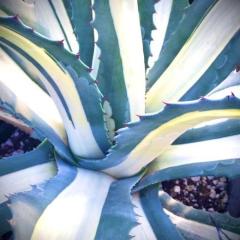

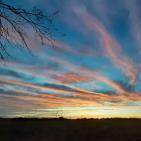








.thumb.jpg.663149aa84e5496166886d97e26b6735.jpg)

